Latest news!
Update: July 2024
The AMC Nature Preserve is now featured on the Akron Borough website!
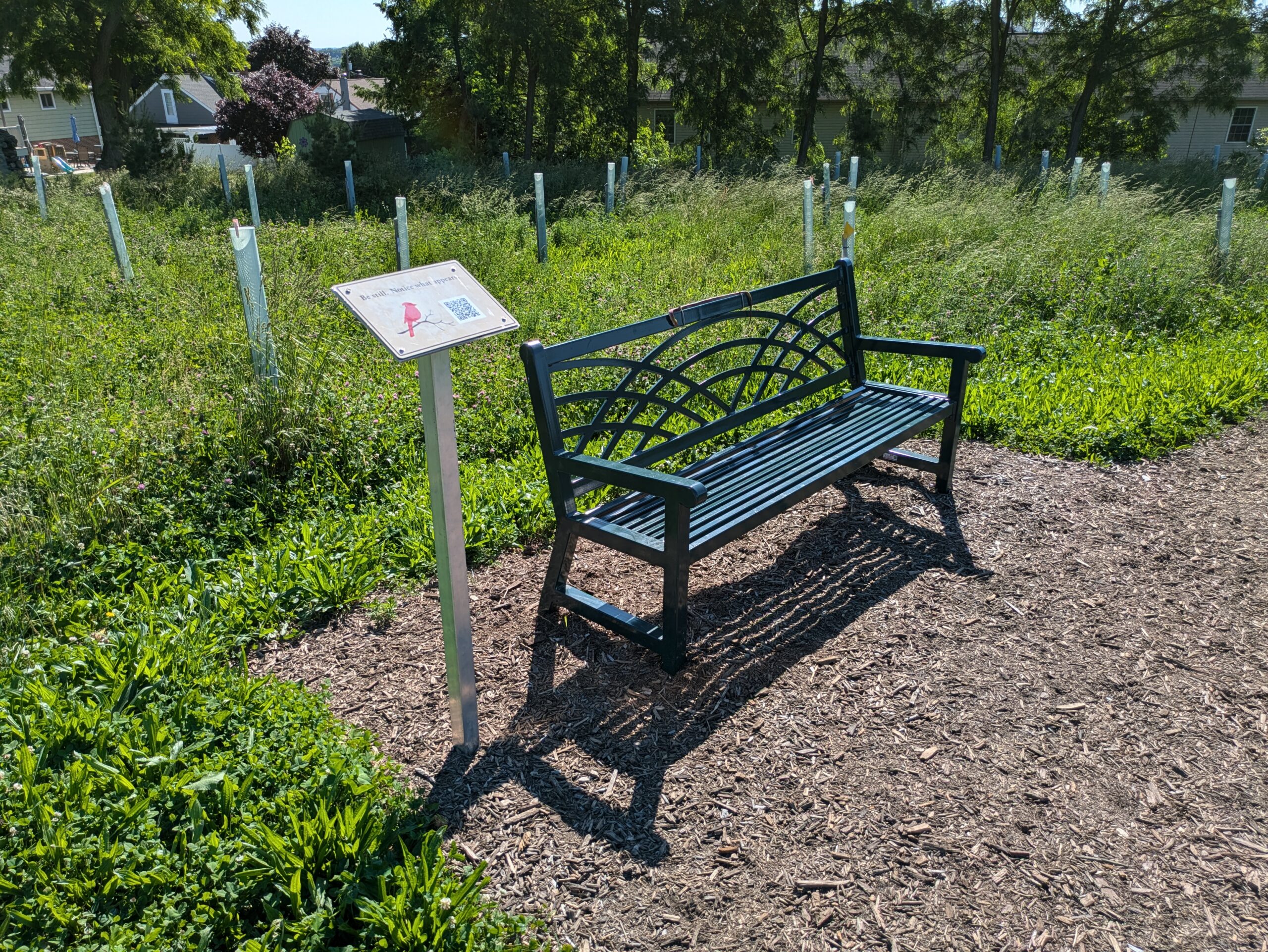
Update: June 2024
Thanks to the efforts of many volunteers, the Nature Preserve and AMC’s campus are basking in spring beauty. The paths through the preserve have been covered with new mulch, the meadow is in full bloom, plants have been tended and mulched, and the new benches have been set in place.
Beside each bench is a sign which includes a QR code. The QR code can be used to access a set of meditative poems and writings using a mobile phone.
We have had an educational visit to the Nature Preserve with further visits planned in the month ahead.

Update: April 2024
Many of the trees have burst into leaf. Tree stewards have been checking their health and the stability of the tubes and stakes. Volunteers are in the process of adding mulch to the wood chip paths for the new season.
A new “guardian” tree, a sycamore, has been planted at the corner of the parking lot, overlooking the entire Nature Preserve.
Update: November 2023
In November a number of volunteers added stone around the base of each tree tube. This was in response to research by the Stroud Water Research Center which demonstrated that this would lessen the likelihood of voles nesting in the tree tubes, eating the bark and girdling (killing) the tree.
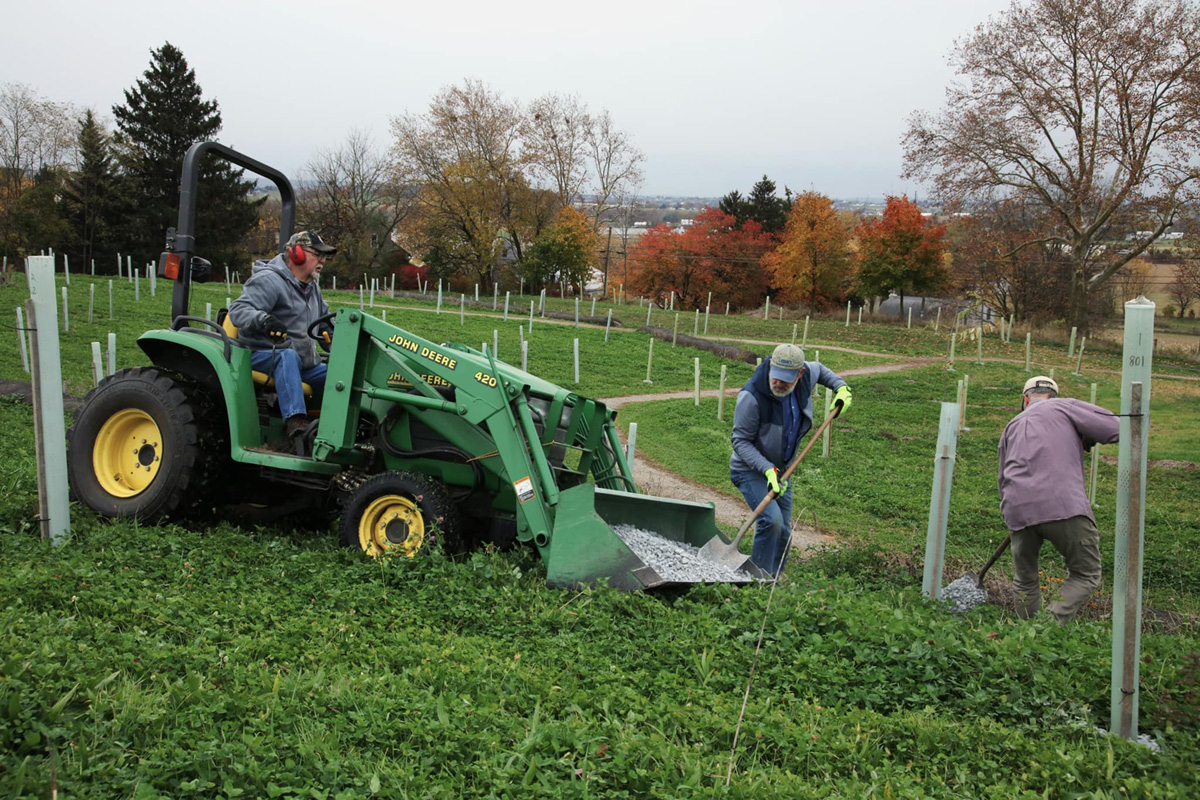
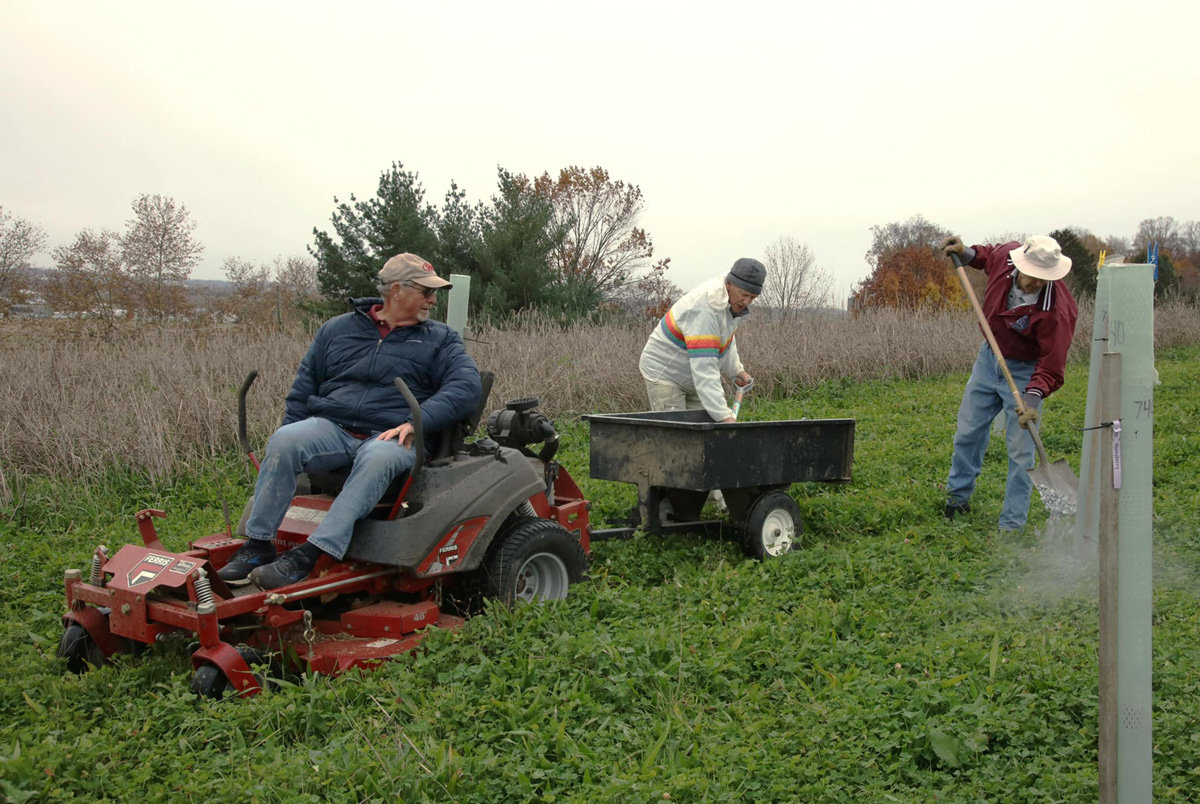
Update: October 2003
Having identified trees that had not survived this spring’s drought, we obtained replacement tress from several sources. With the help of volunteers and despite a rainy day, we were able to plant about 100 replacement saplings or nuts (acorns, hickory nuts) in October.
We also added new plantings around the bio-retention basin and in the area where equipment and excess soil had been stored over the summer. All of these new plants were numbered, tagged and mapped in the same way as the rest of the trees.
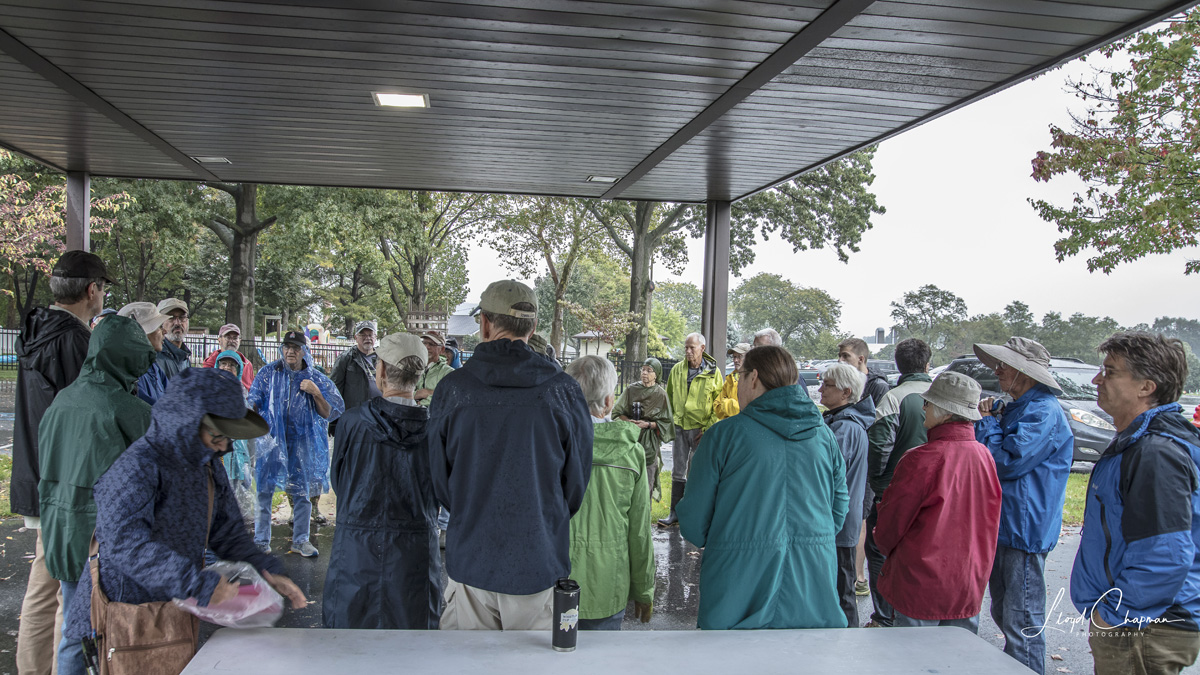
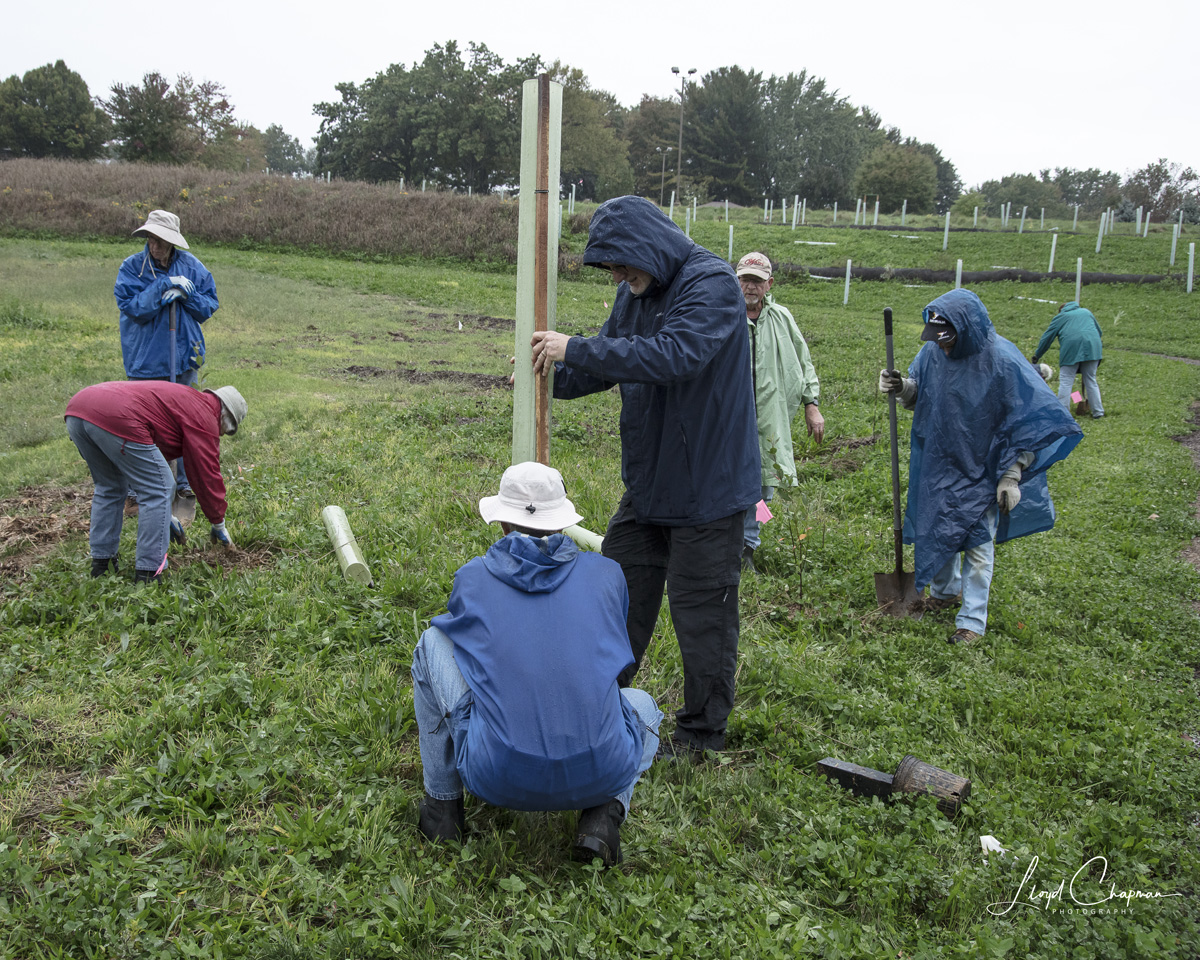
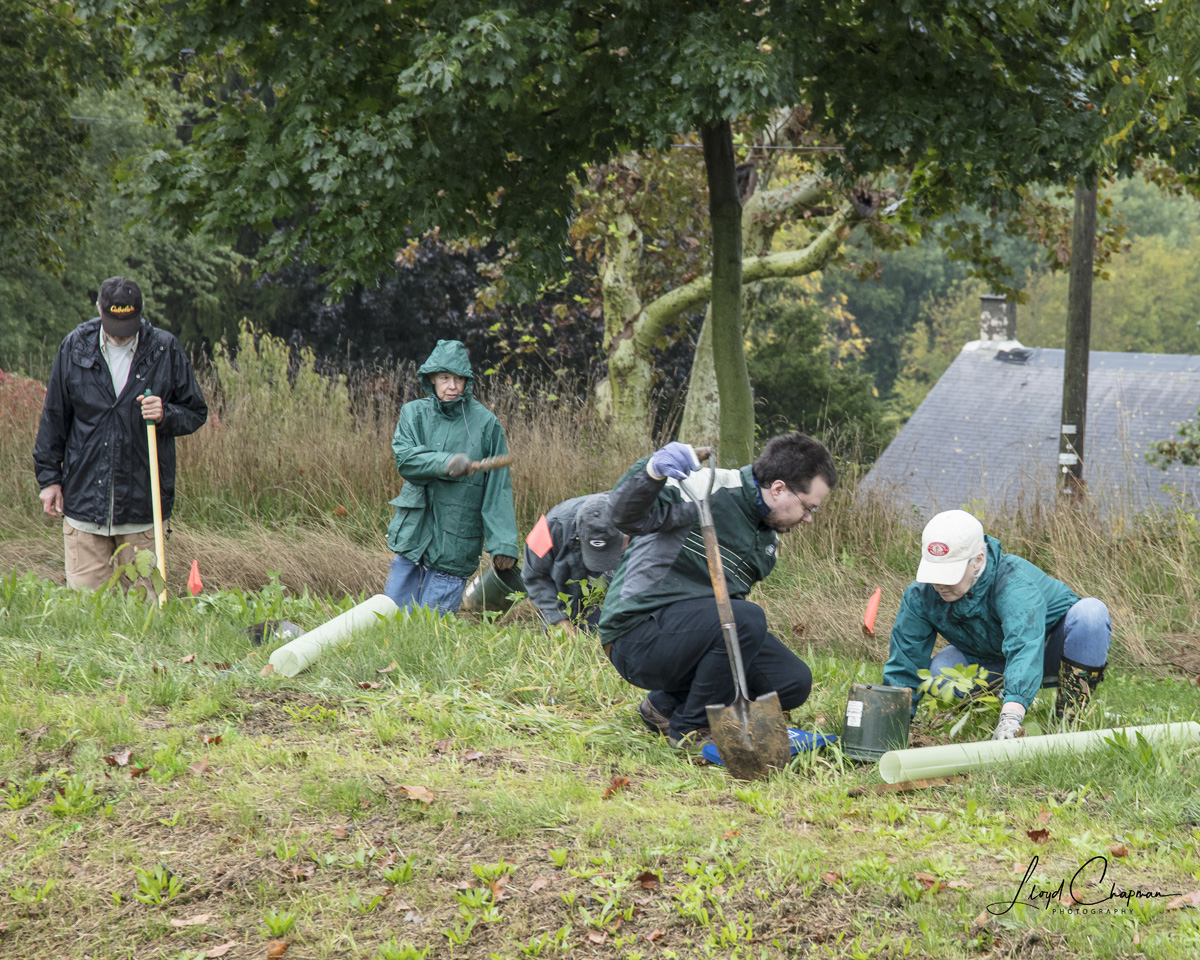
Progress report – July / August 2023
Now that the trees have been in the ground for 9 months, a team of AMC’s trained “Riparian Rangers” and other volunteers are working to check on the health of the trees and to enable future care and maintenance. Each tree in the Nature Preserve is being examined and documented. We are weeding around the tree; checking that the stake is upright and stable and that the tube is firmly attached; identifying the species of tree in each tube; adding a tag with a unique number and the species to each tube; documenting these facts in a log along with the estimated height of the tree. We are pleased to note that we are recording about 80% survival rate after 9 months, despite the drought this Spring. We have marked with a clothes pin any tube where the tree planted last October has died, and these will be re-planted this coming October.
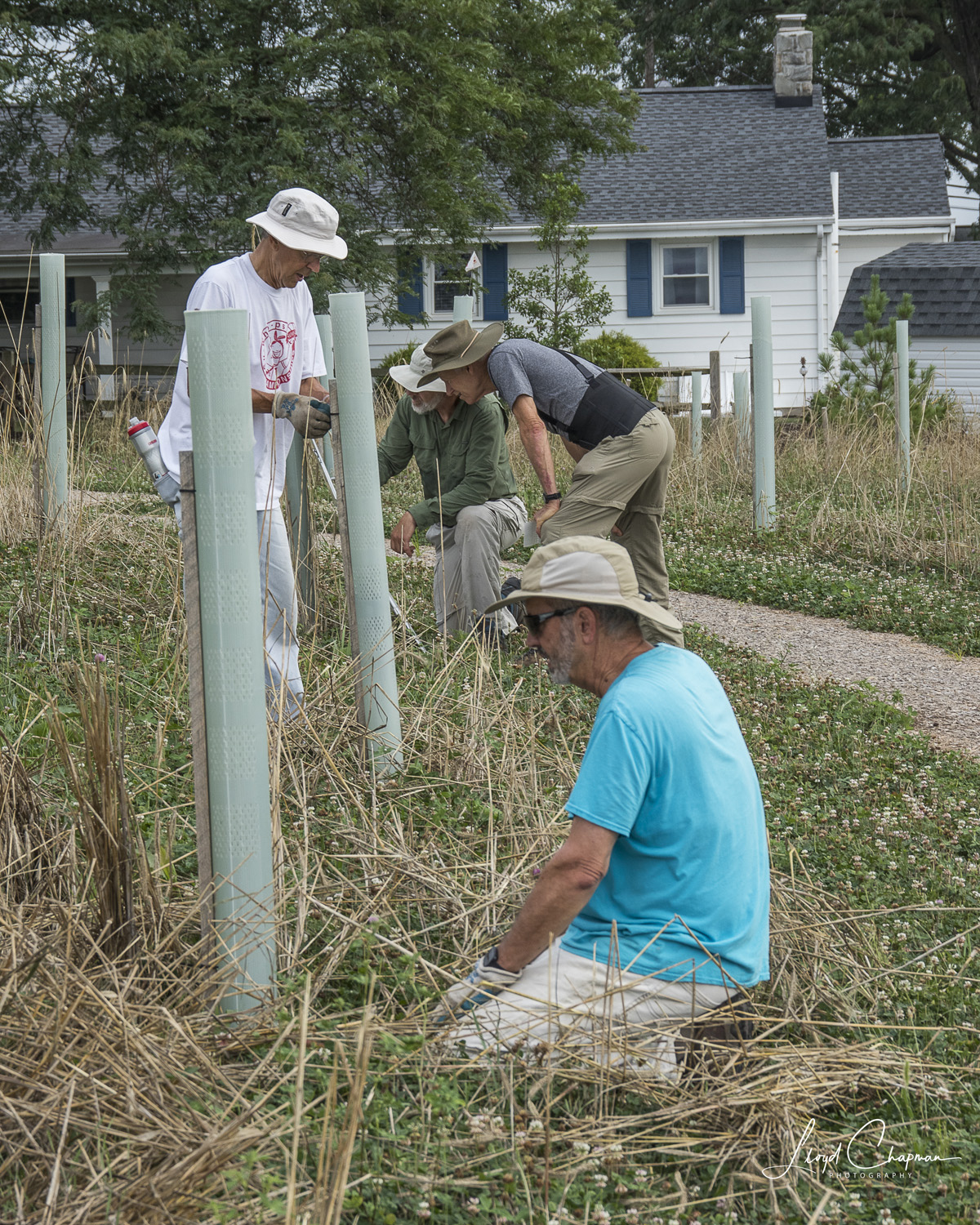
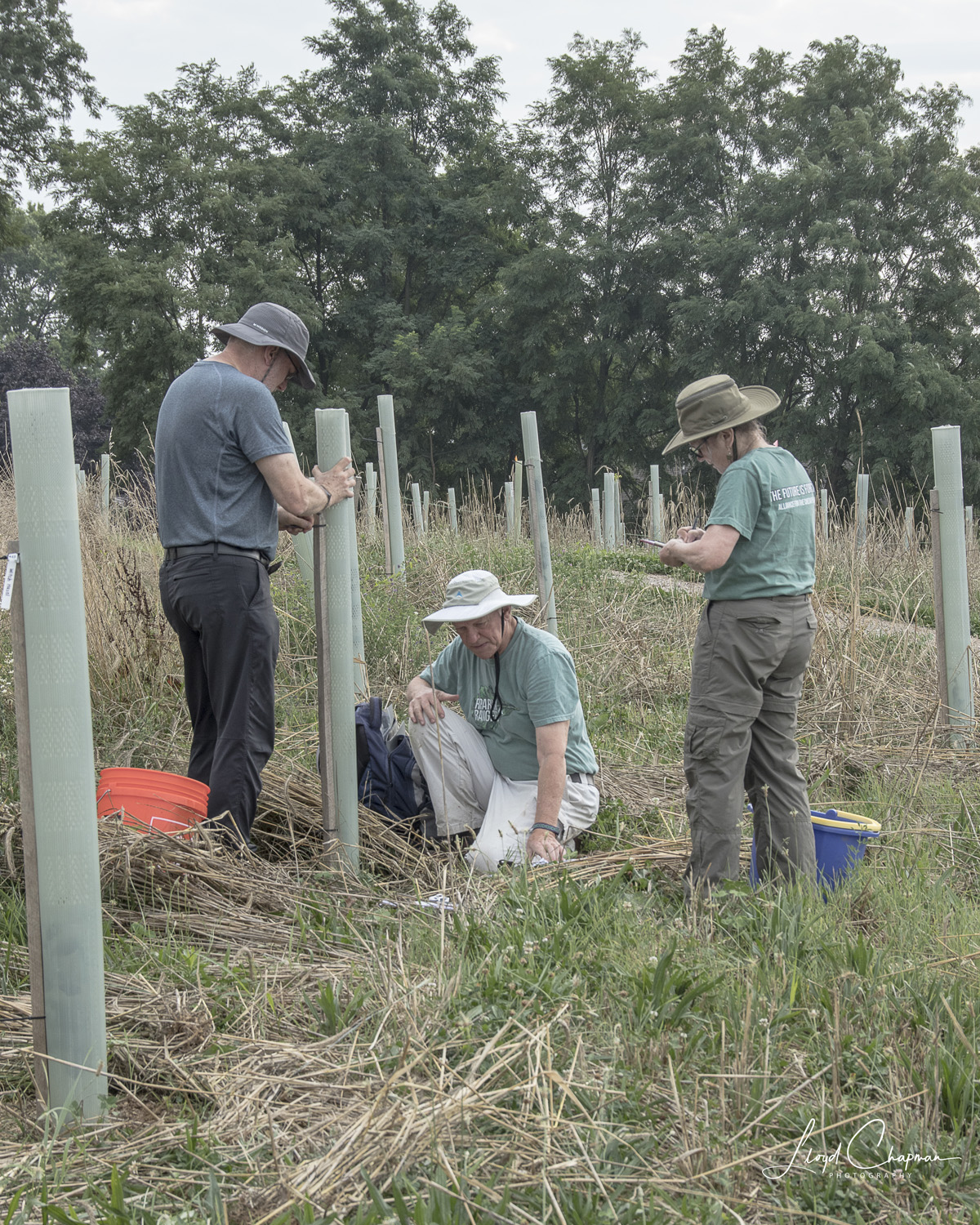
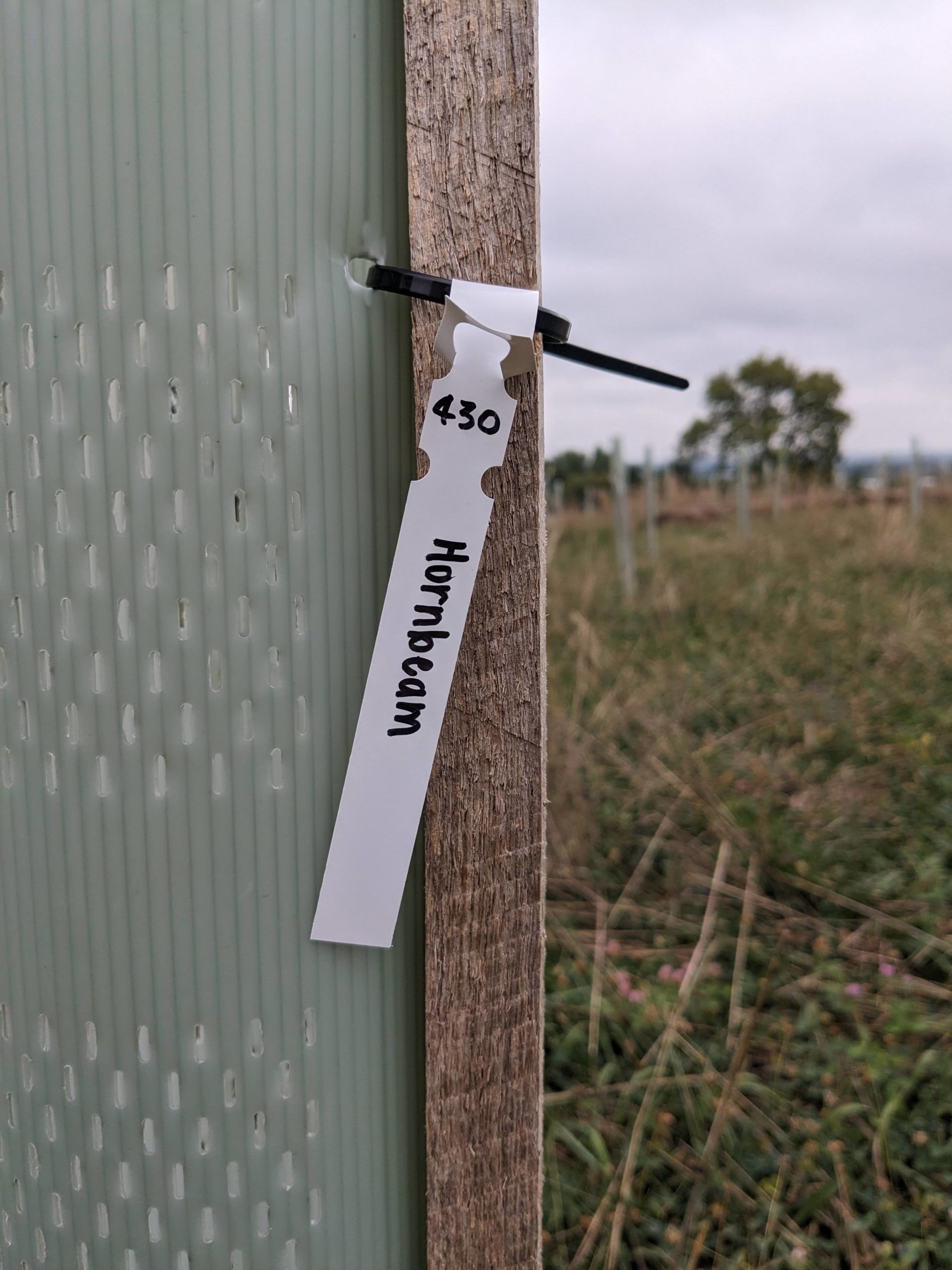
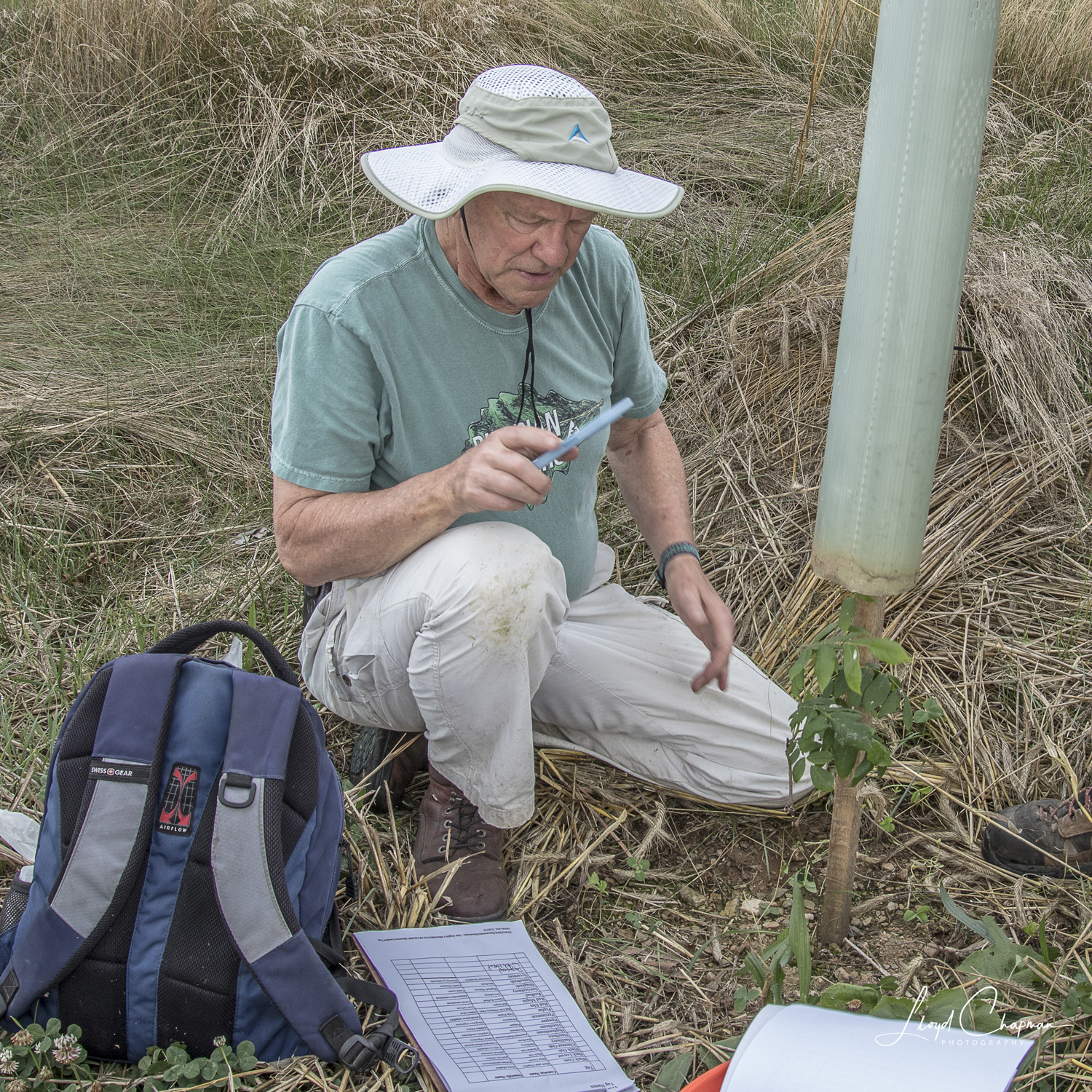
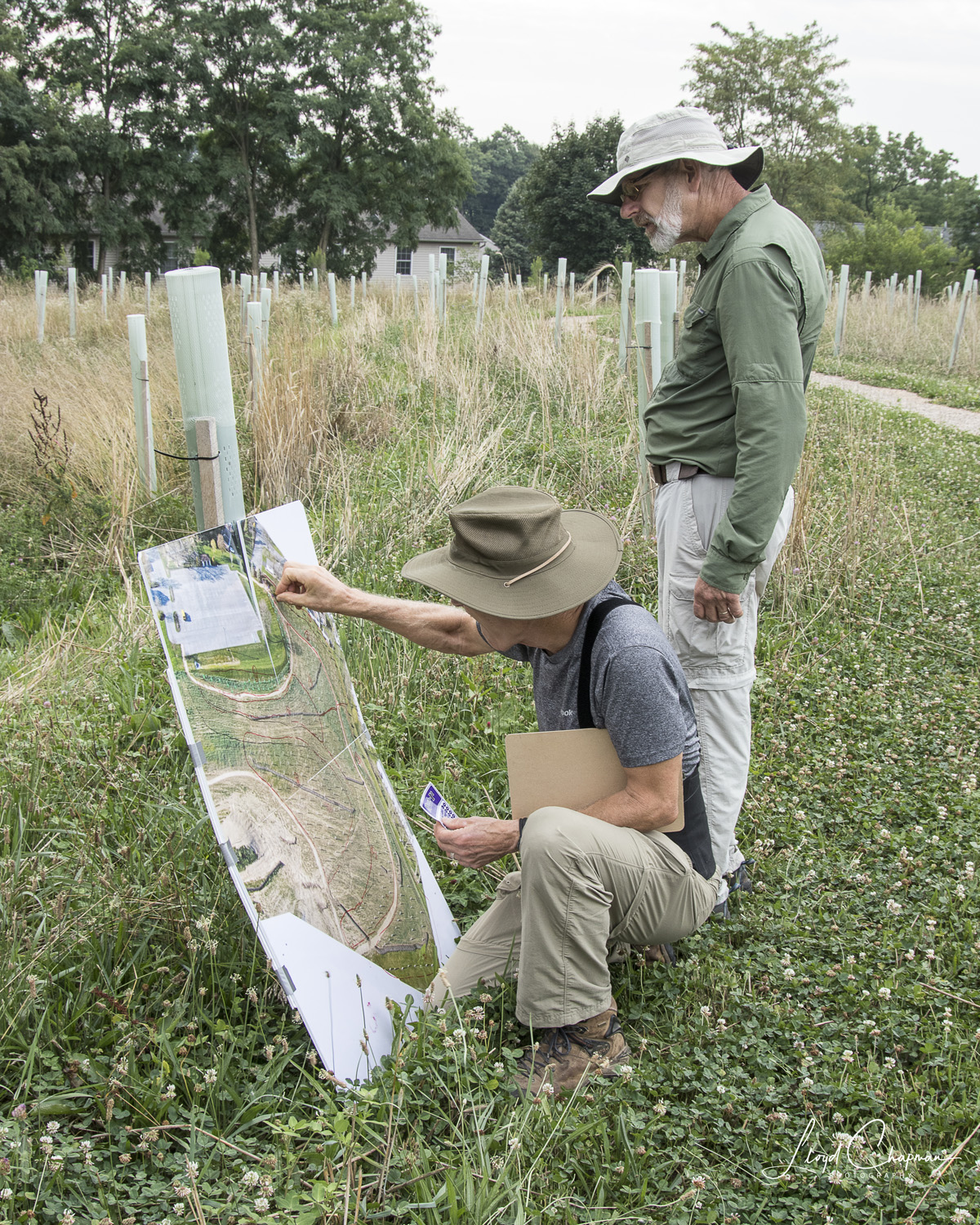
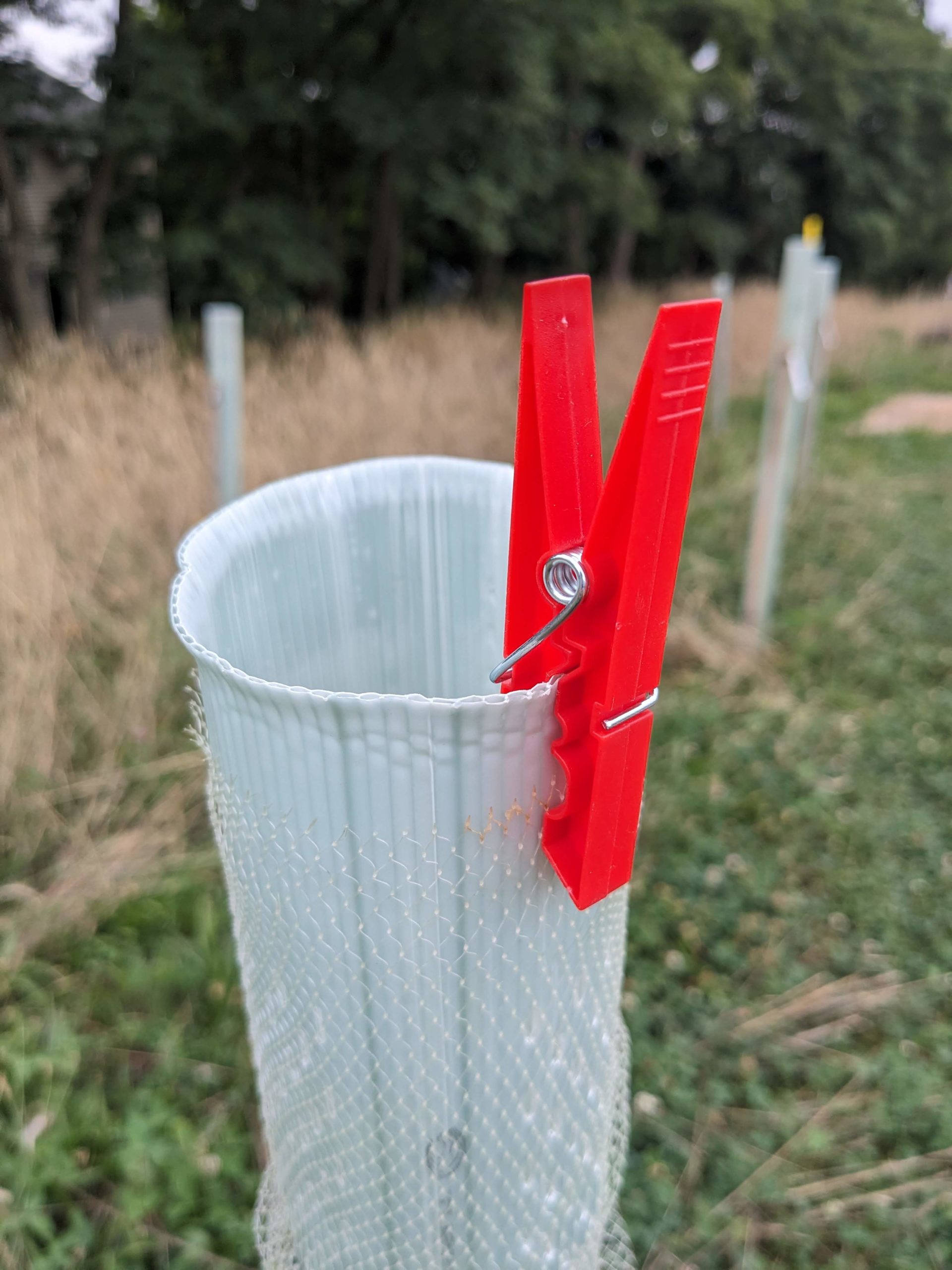
25 June, 2023
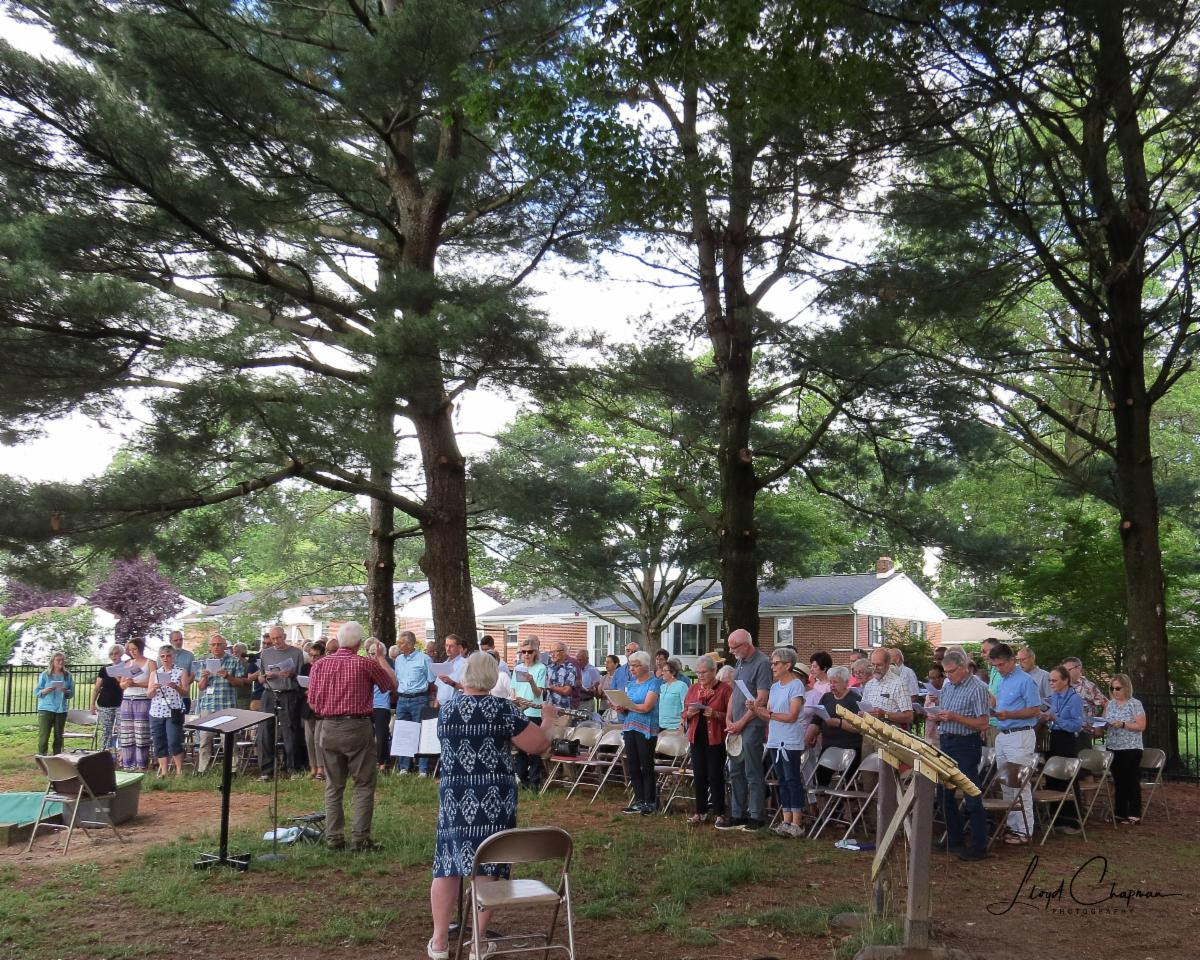

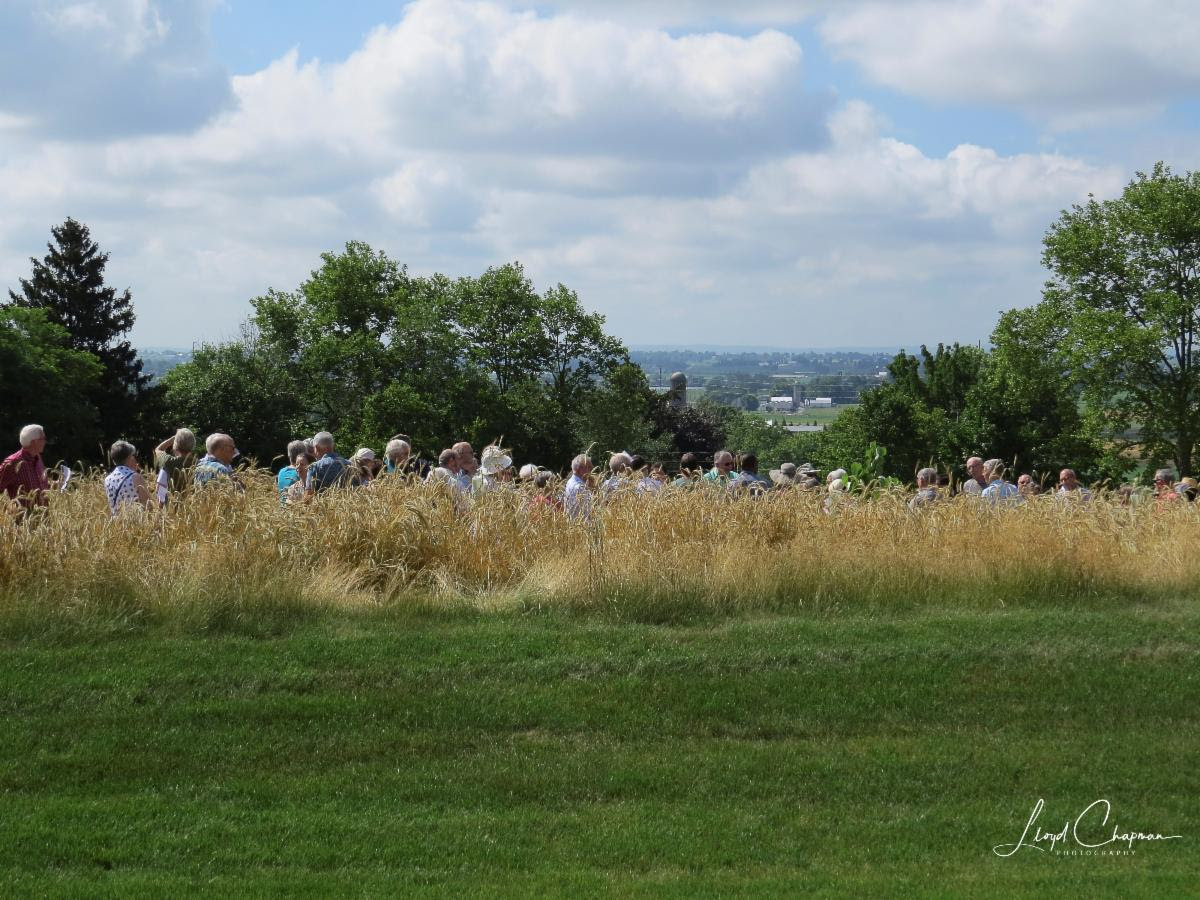
- 18 species (1 shrub, 7 small trees, rest large trees)
- All native!
- Chosen for a good mix of attributes (speed of growth, support pollinators, provide habitat, provide fall color, etc).
- Plan to add informational signs as the trees begin to grow and leaf out. Have a look down a tube!
- Socks over tubes are to prevent birds falling into tubes, will be removed as trees reach tops of tubes; tubes and socks are not yet bio-degradable; research in progress to develop bio-degradable version, but they have to retain strengthen for up to 5 years.
- Care of trees: check stakes remain firm, re-attach tubes to stakes, lift stakes to weed around based of tree, remove any invasive species popping up in or around tubes.
–Andrew Adams
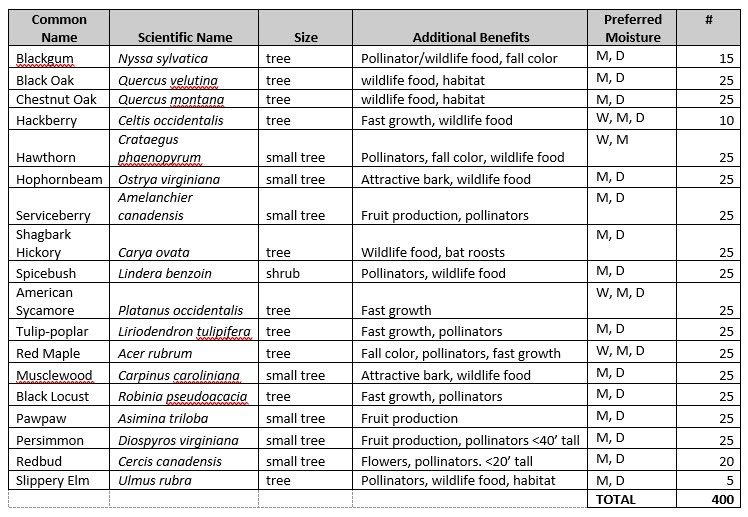


May 1, 2023
Anabaptist World has published an article this week about the Nature Preserve and Green Burial initiatives of Akron Mennonite Church entitled “Sacred Endings, Beginnings.”
Sacred Endings, Beginnings AW article 5.5.23
For a brief explanation of Green Burials see the Green Burials section below.
For more information on Green Burials, contact John Weber, Chair of the AMC Cemetery Committee, at weberjj@ptd.net
For more information on the work of the Green Team, contact Donna Mack Shenk, donnamackshenk@gmail.com
Green Burials at Akron Mennonite Church
What is a Green Burial?
Green burial is natural burial of a body neither cremated nor treated with embalming fluids. Green, or natural, burial returns the body to the soil with only biodegradable materials that decompose readily with the body. These may include a biodegradable coffin, casket, or shroud.
Green burial uses no toxic chemicals, preservatives, plastics, cements, or concrete vault or outer container that would prevent the body’s return to the soil. Green burial graves are often dug by hand, but we have used the help of a machine. With respect to legal standards, the grave is shallow enough to allow microbial activity like that of composting.
Green burial conserves natural resources, reduces carbon emissions, protects public health, restores habitat, and avoids environmental damage caused by contemporary methods.
Green burial is a recently adopted term reflecting the burial practices of ancient and indigenous cultures, and of North Americans before the introduction of chemical embalming at the time of the Civil War.
Providing Green Burials is a practice consistent with our desire to be good stewards of the earth, waterways, and the environment.
For more information, please read about burial options at AMC here: AMC Cemetery Association Burial Options final
If interested in Green Burial at Akron Mennonite, please contact weberjj@ptd.net or amc@akronmench.org
Thank you
To all the volunteers who have worked so hard, in some cases for many years, to bring this project to the construction phase!
To project photographer Lloyd Chapman, and drone photographer Phil Rutt. Additional photos and videos provided by Bob Wyble, Andrew Adams and Rebecca Pereverzoff.
To the AMC Green Team for their enthusiasm, dedication and hard work in keeping the project moving.
Overview and history

The journey to AMC’s Nature Preserve
Back in 2012, members of Akron Mennonite Church attended seminars on end-of-life planning which included discussions about burial options. This triggered a discussion about the use of the 4 acres next to the church as a memorial garden.
A group of members formed the Memory Garden ministry team under the church’s Outreach Committee to explore the idea further. The Outreach Committee provided seed funding and landscape architects were appointed. The initial proposal presented by the architects was far more expansive than the AMC team desired and after further discussions a more modest plan with more natural elements was agreed. This became the core of the plan approved for use in the 2022 construction.
By 2015 the church was in the midst of an interior renovation of the Assembly Room and the lobby area. Funds were limited and so the Memory Garden project was postponed. However, the vision was kept alive and the AMC team contacted Lancaster City Mennonite churches which did not have their own burial grounds to explore whether they would be interested in joining as an inter-Mennonite project. These discussions were well received and interest was expressed in collaboration with the project, with AMC retaining control and ownership.
During the following couple of years, the project was again postponed due to budgetary needs and fear a Memory fund raising campaign would divert funds from operational needs at AMC. However, a small group of AMC members kept the vision alive by several individuals providing donations that ensured design costs and fees were covered.
By 2019, finances were looking more favorable and the church had embarked on another project – the addition of solar panels to the church’s roof. The Memory Garden team decided to refocus the project from that of a Memory Garden to a Nature Preserve. This more aligned the project with the church’s Anabaptist values and focus on creation care (e.g. through the use of solar panels) and opened the resulting space to use by members of the community. Use of native trees and plants will also ensure that the 4 acres would add to the growing environmental movement in Lancaster County to create and replace native habitat to help wildlife and pollinators to thrive.
The relationship with Lancaster City churches and one in Akron was revived and five local churches agreed to invest in the project to provide their own members with access to cemetery lots; these churches are Pilgrims Mennonite (Akron), Blossom Hill Mennonite, James Street Mennonite, Community Mennonite Church of Lancaster and East Chestnut Street Mennonite.
In April of 2022, the AMC church council officially approved the project only after sufficient pledges and cash were in hand to cover the cost of construction. By late spring a construction contract was signed. The initial plans were amended eliminating a driveway from Diamond Station Road up to the church parking lot and removing the columbarium and memory wall reducing construction costs enough to move ahead with the Nature Preserve. In the future the eliminated items could be added, if funds were available.
The scope of the project
A Nature Preserve with trees, walking paths, flowering meadow, and rain garden, will be created in the 4-acre plot of grassland adjacent to the church.
A sidewalk will be set in along Diamond St and Diamond Station Rd from the church entrance to the lower end of the property.
Construction
Pre-construction meeting
On Friday July 22, 2022 a pre-construction meeting was held on the church property. Present were representatives of RGS Associates Inc (landscape architects), B.R. Kreider & Son, Inc (excavating contractor), Akron Borough and Akron Mennonite Church.
A good spirit of teamwork and co-operation was evident. The AMC team was given a few final decisions to make before drawings are finalized and work begins.
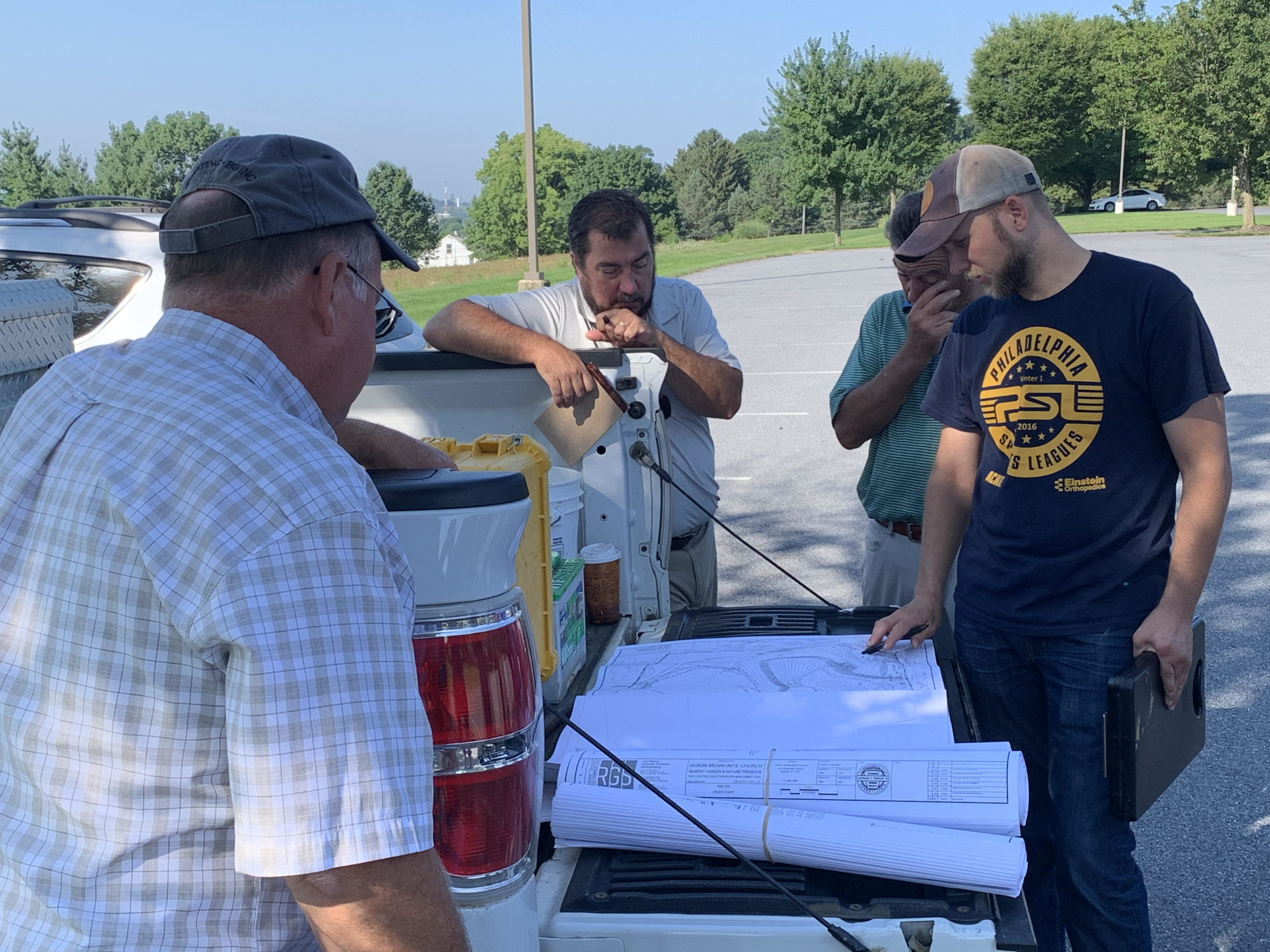
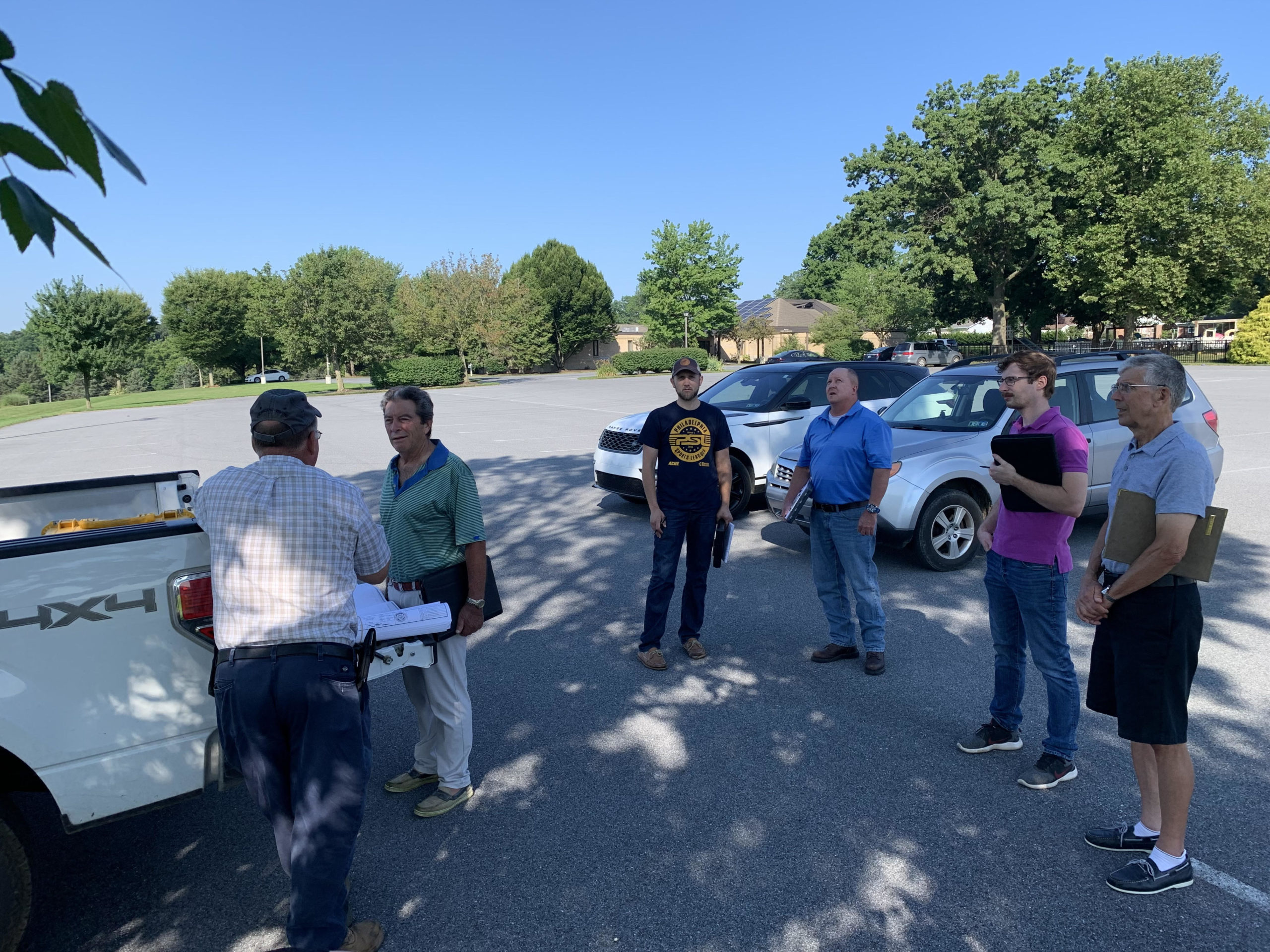
Service of Blessing for the Nature Preserve
The Service of Blessing for the Nature preserve took place on the afternoon of Sunday July 31. Members of AMC were joined by representatives of Akron Borough, the contractors, other churches partnering in the project and neighbors and friends.
The service took place in the grove of trees next to the church and attenders enjoyed ice cream sandwiches as they chatted following the service.
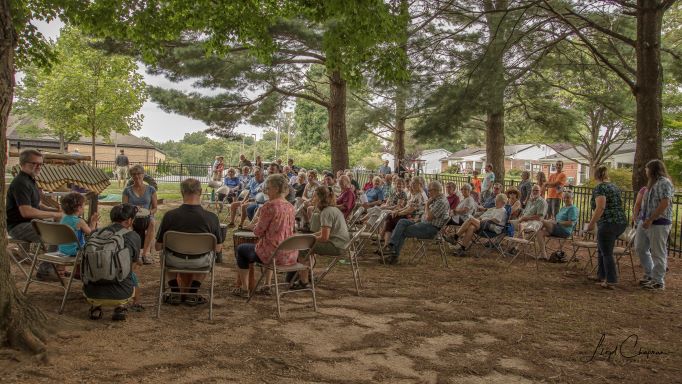
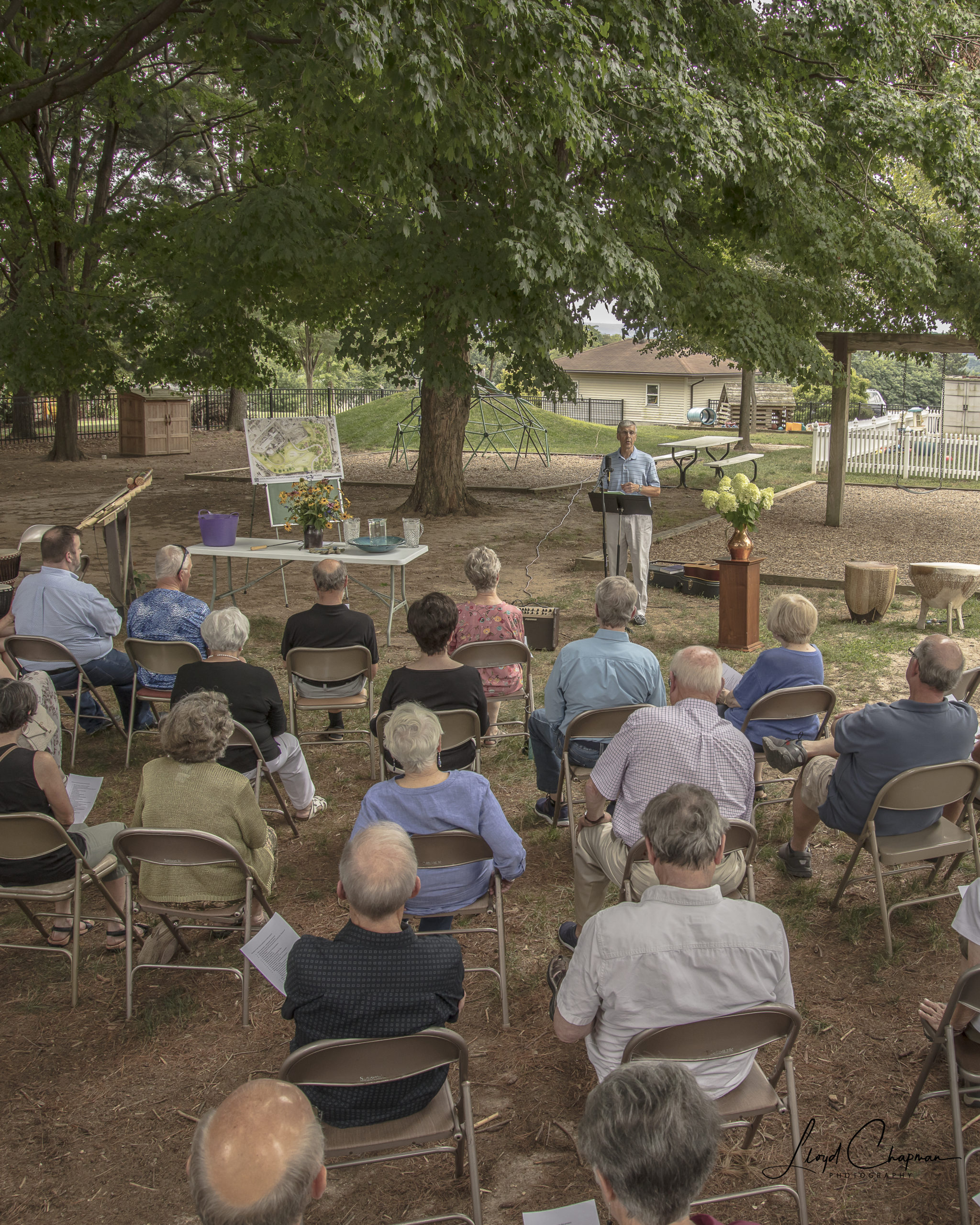
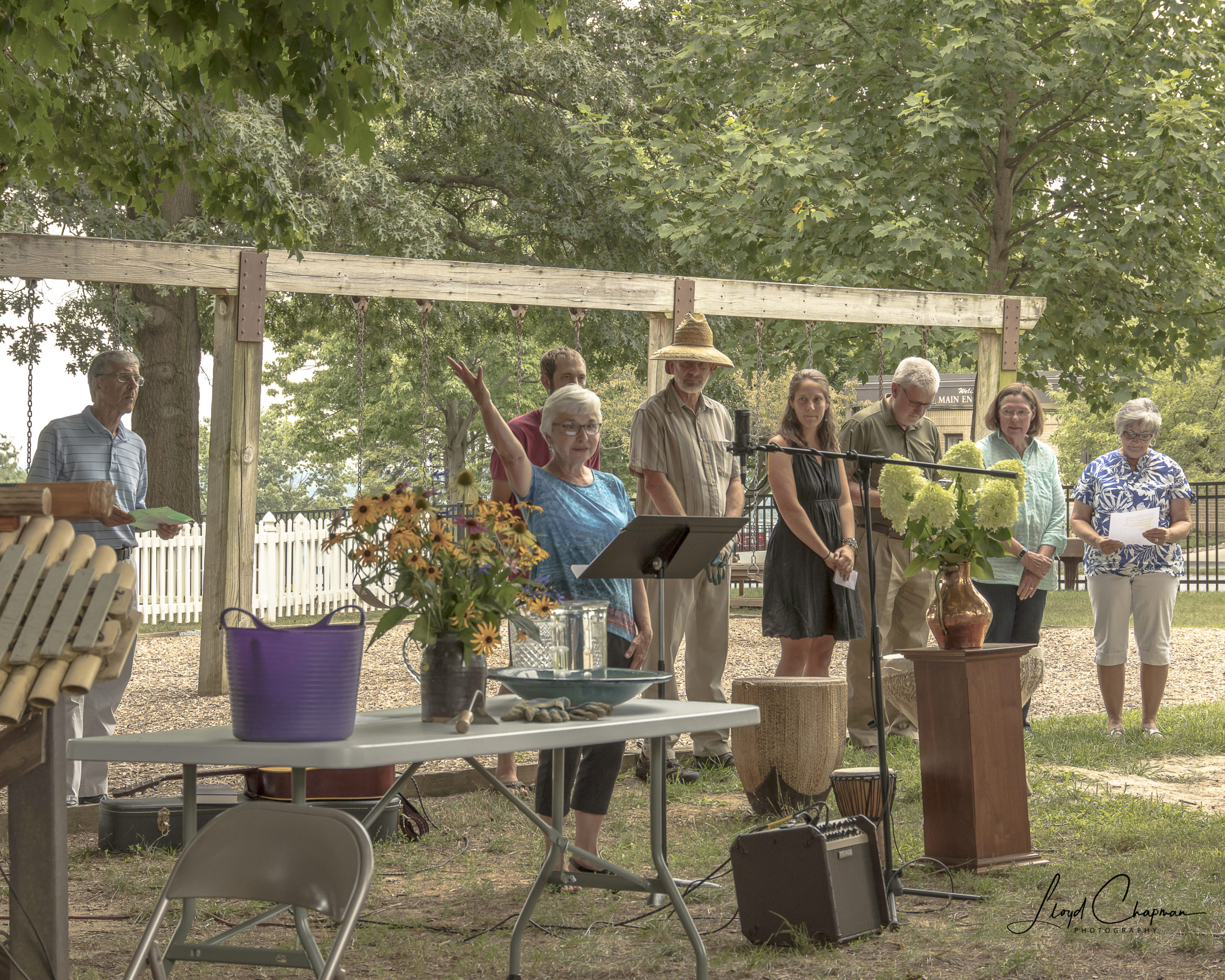
Earth-moving phase
Week of August 1, construction began! First, final pre-construction surveying was completed. Then trees were removed along Diamond Station Road, silt tunnel was installed to protect the site and its surroundings and some earth-moving began at the Diamond Station Road entrance to the site. Earth-moving continued throughout August to re-contour the site to meet the approved plan and to develop the retention basin to control storm water.
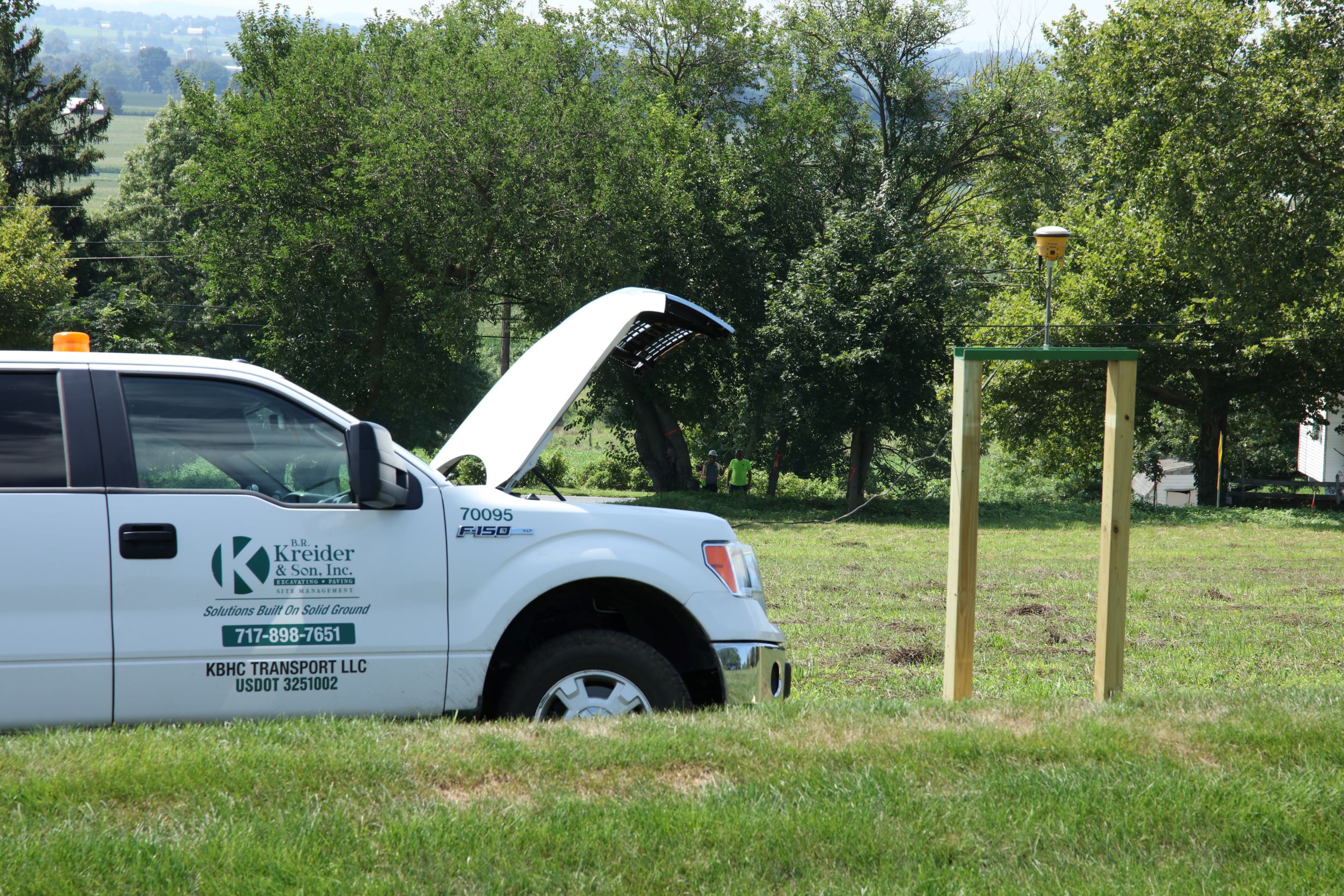
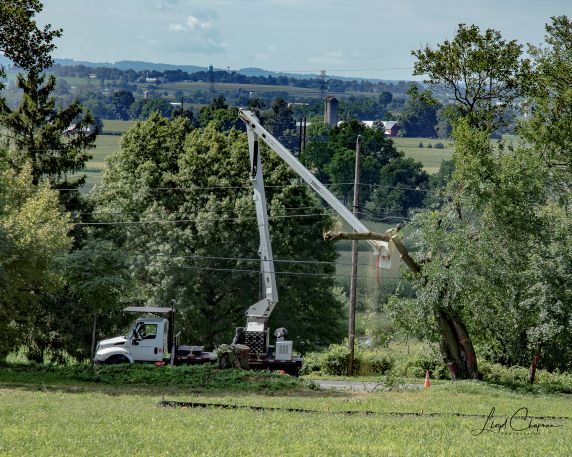
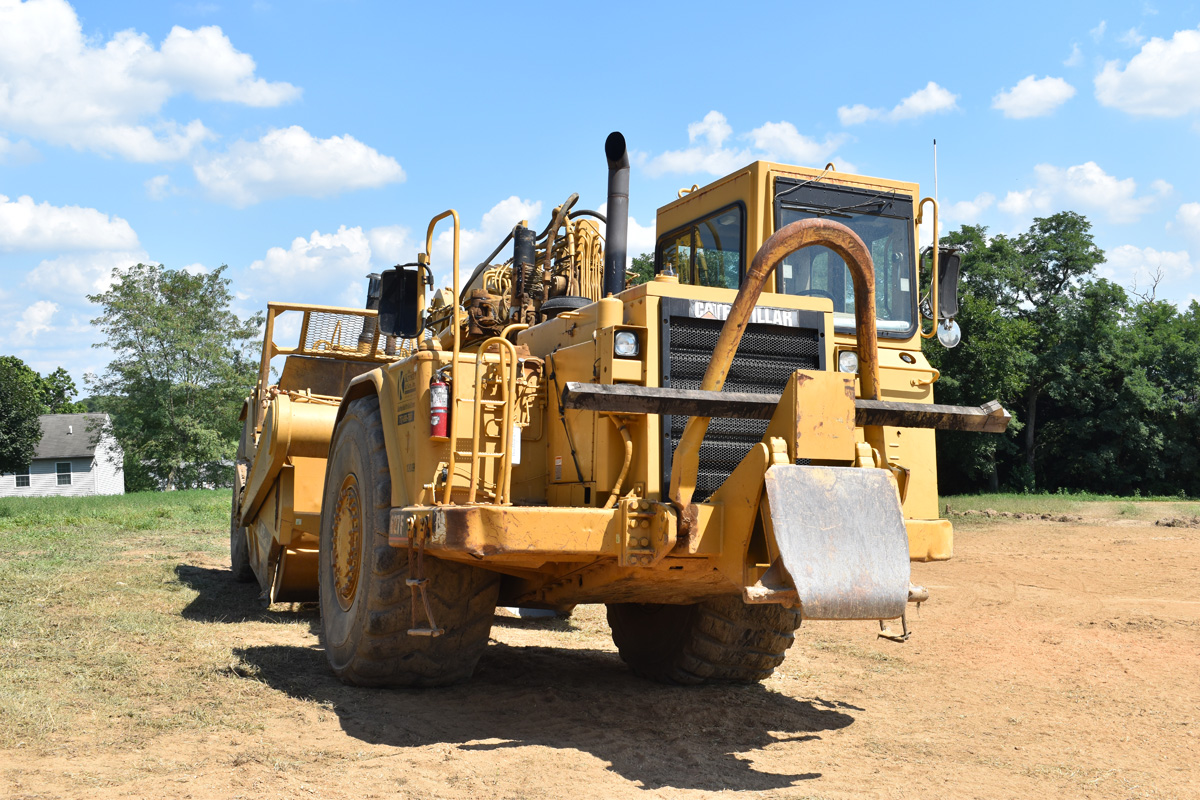
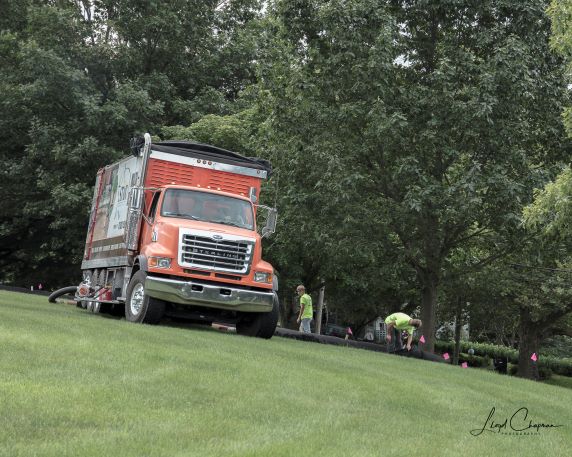
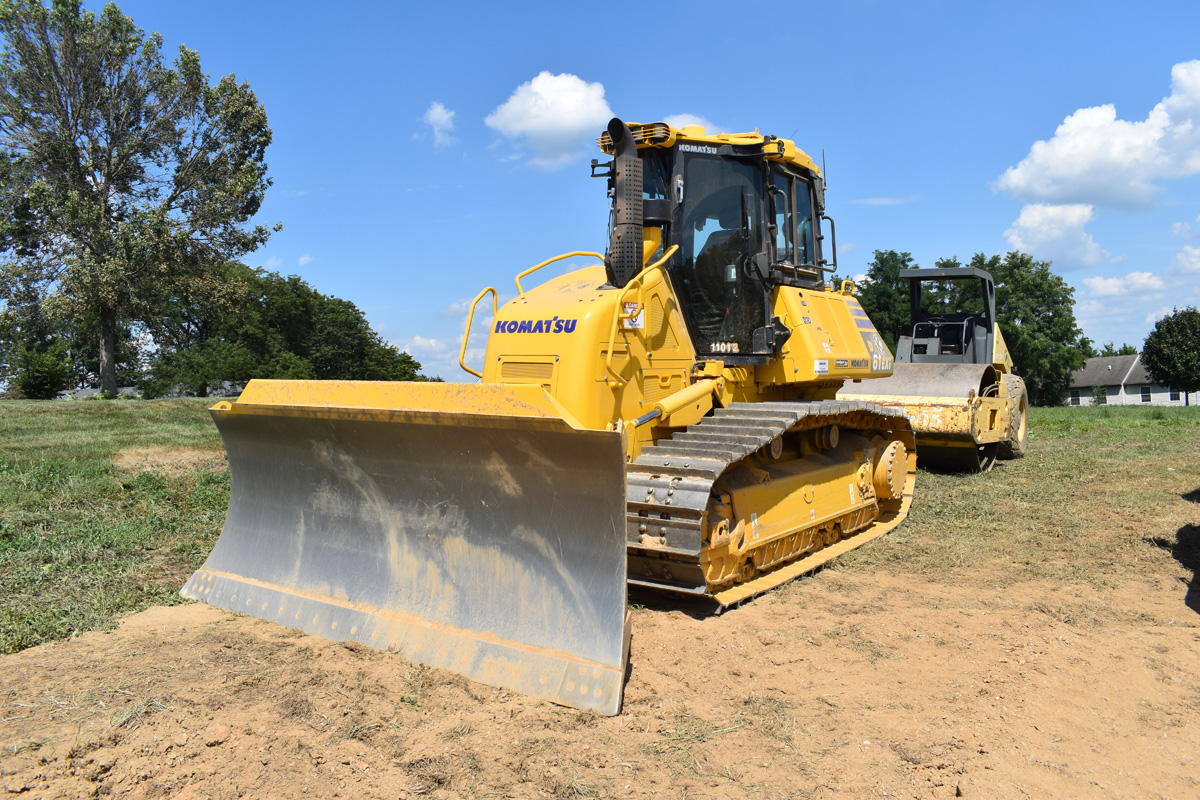
Topsoil and sidewalk
After completion of earth-moving, topsoil was spread on the site to the required contours and the sidewalk was constructed. The sidewalk provides pedestrians on Diamond St. and Diamond Station Rd. with a safer and less steep pathway without having to cross the street.

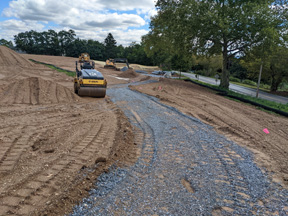
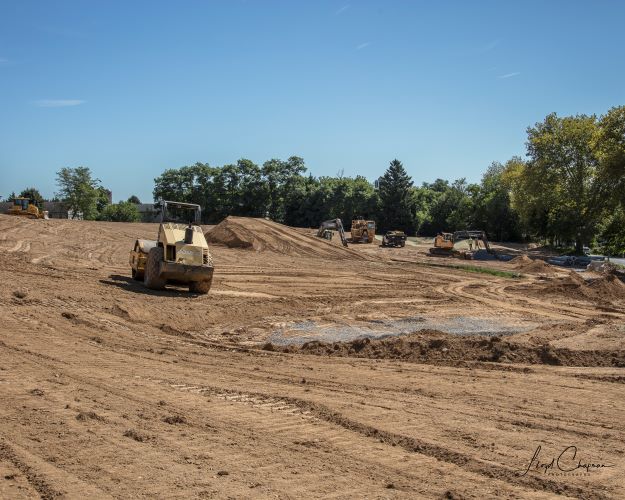
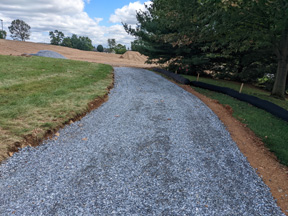
Sowing
By mid-September, thanks to the loan of a tractor and sower, the site had been sown with rye and clover to prevent soil erosion. Slopes were seeded by hand where necessary. Discussions were held with Tim Seifarth of Earthbound Artisan about plantings for the retention basin / rain garden.
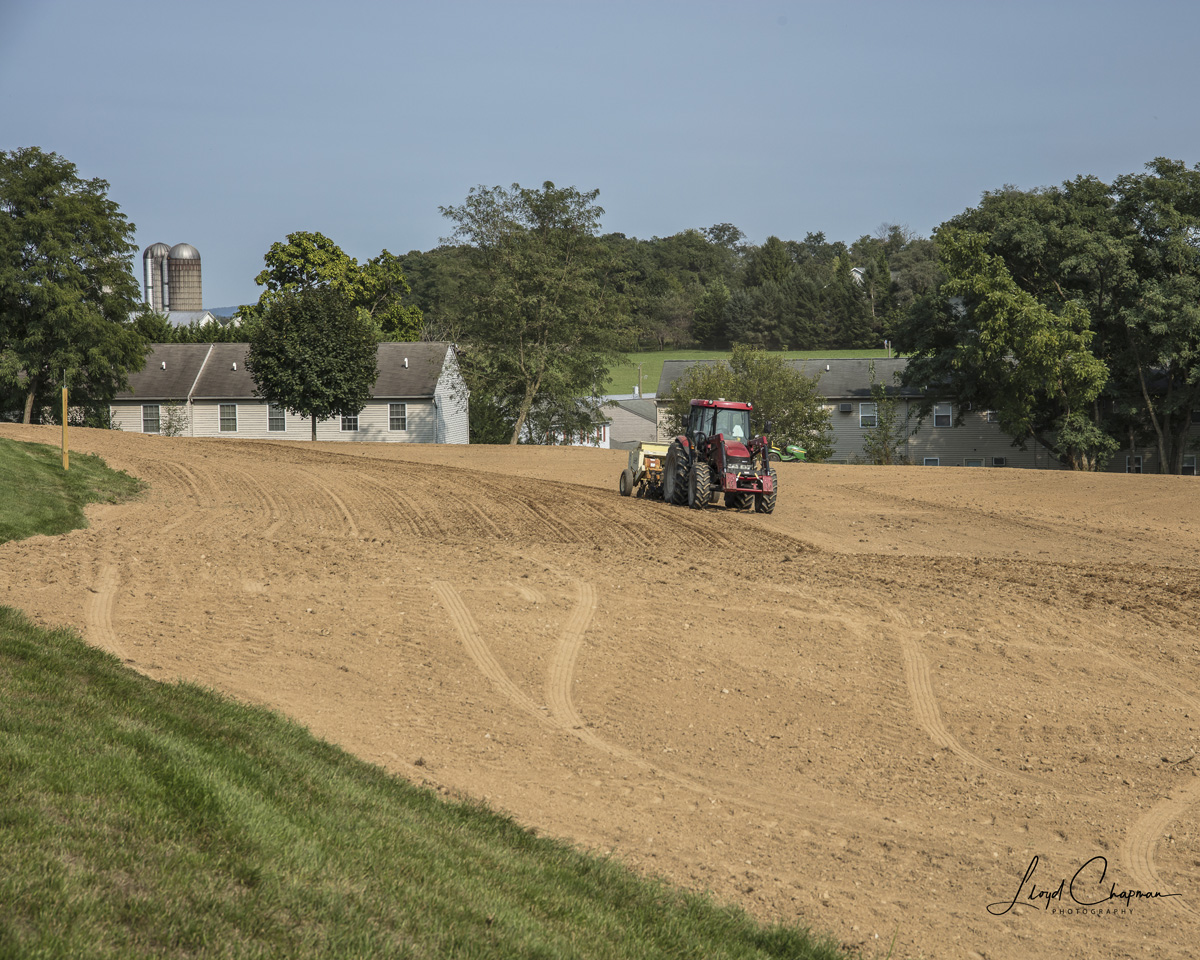
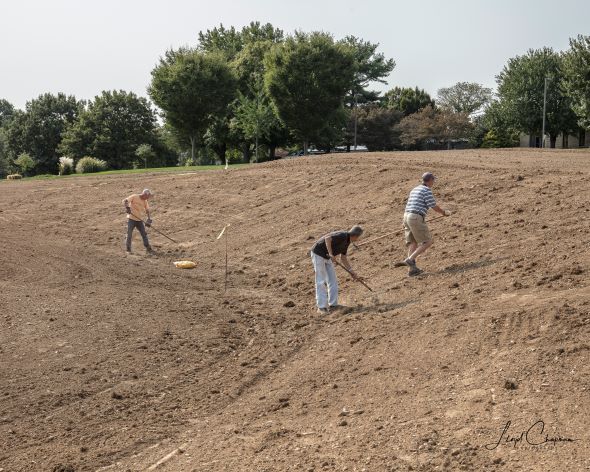
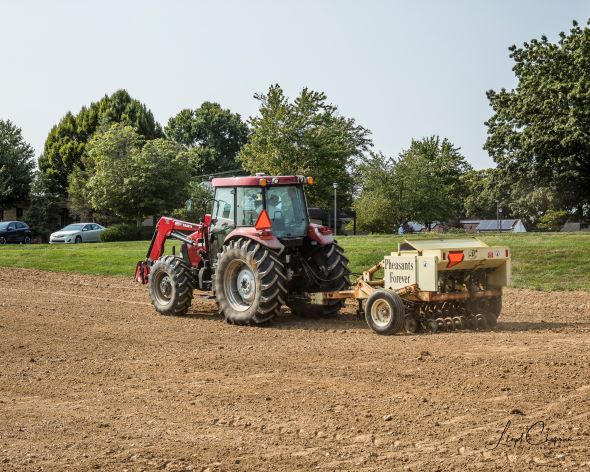
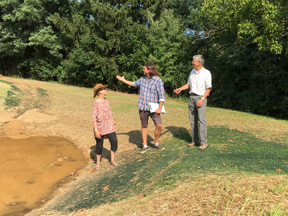
Sidewalk construction
At the end of September, upon completion of the sowing, additional silt tunnels were added to the site to prevent erosion while the seeds germinate. The sidewalk was completed, and some of the remaining heap of topsoil in the center of the site was used to fill in along both sides of the sidewalk. The rest of the heap will be used for the same purpose along the edges of the wood chip paths still to added to the site.
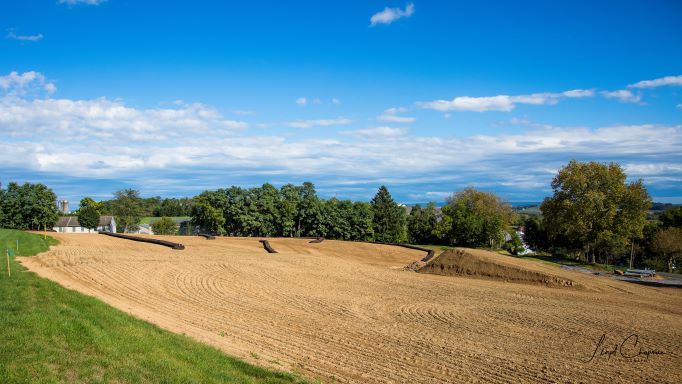
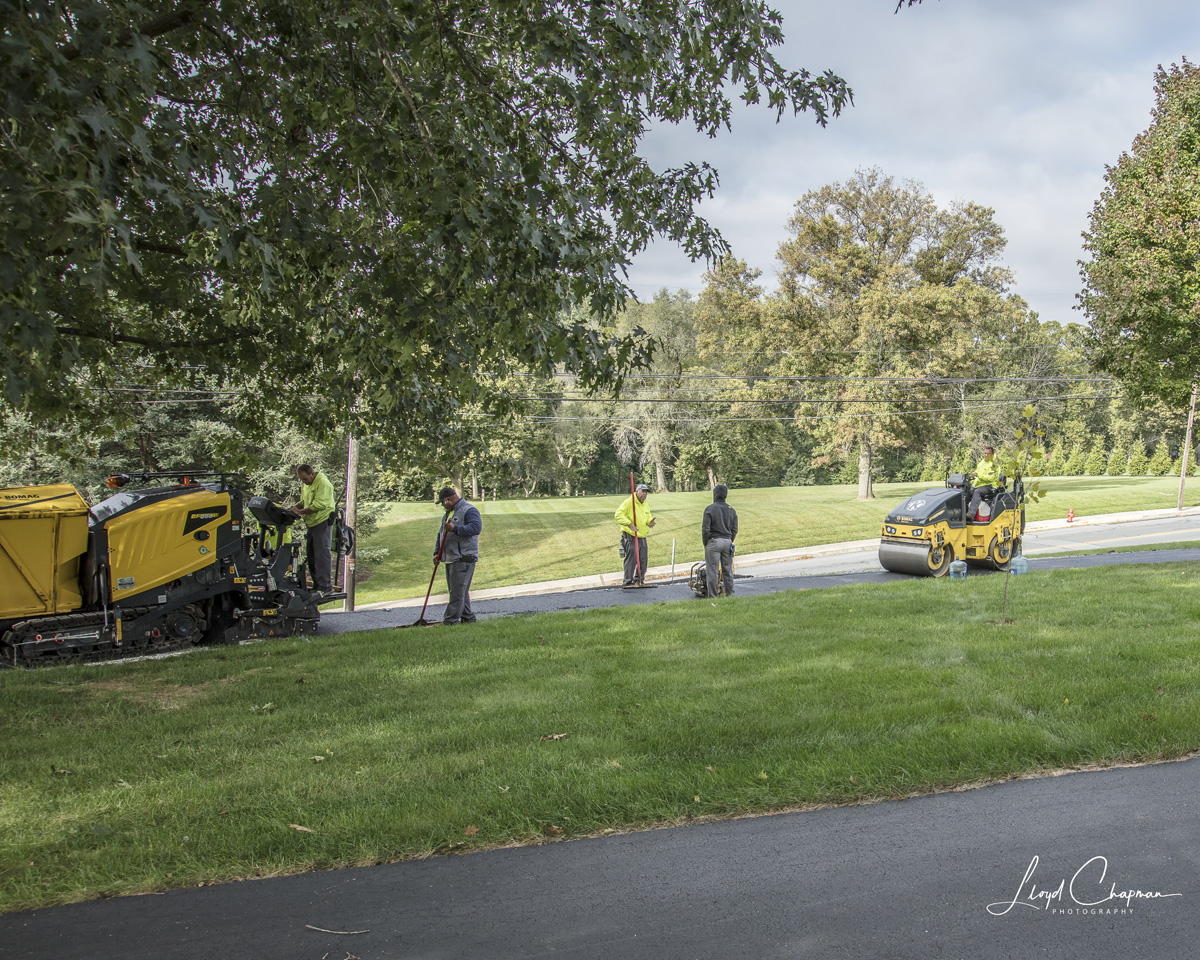

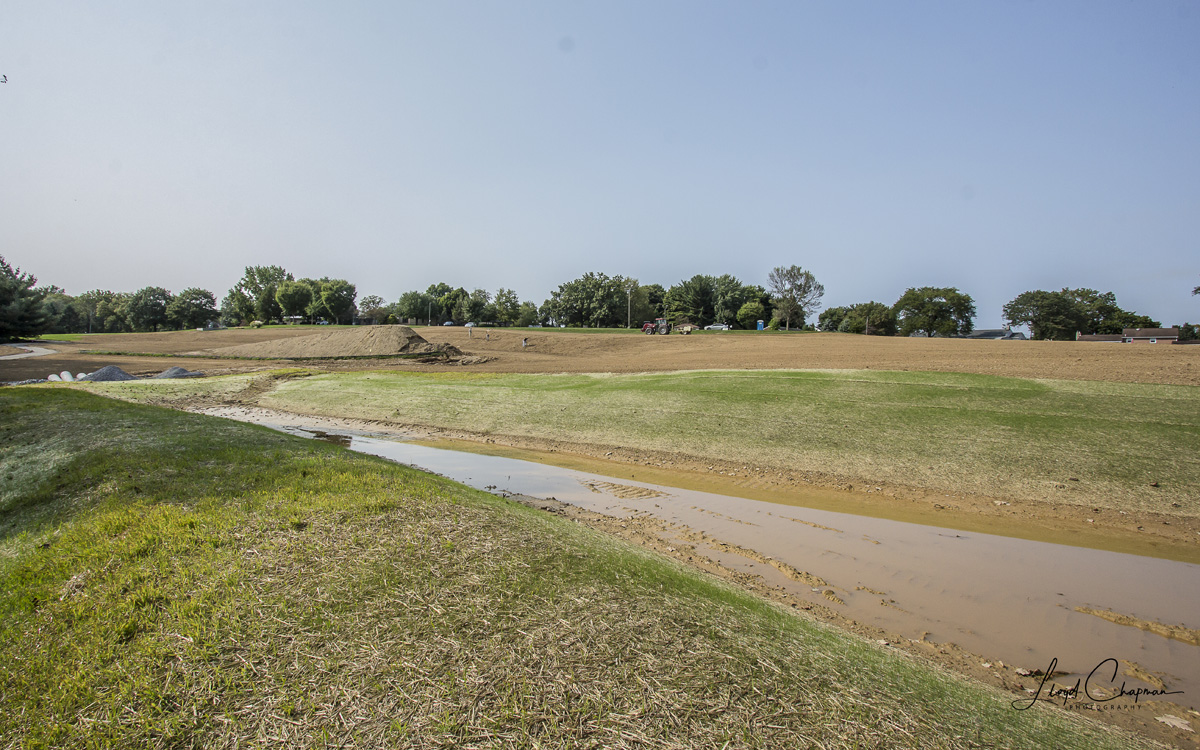
Tree planting
Over 400 trees were planted on October 15, 2022. The occasion was an inspiring community event and a great success! Thank you to everyone who took part!
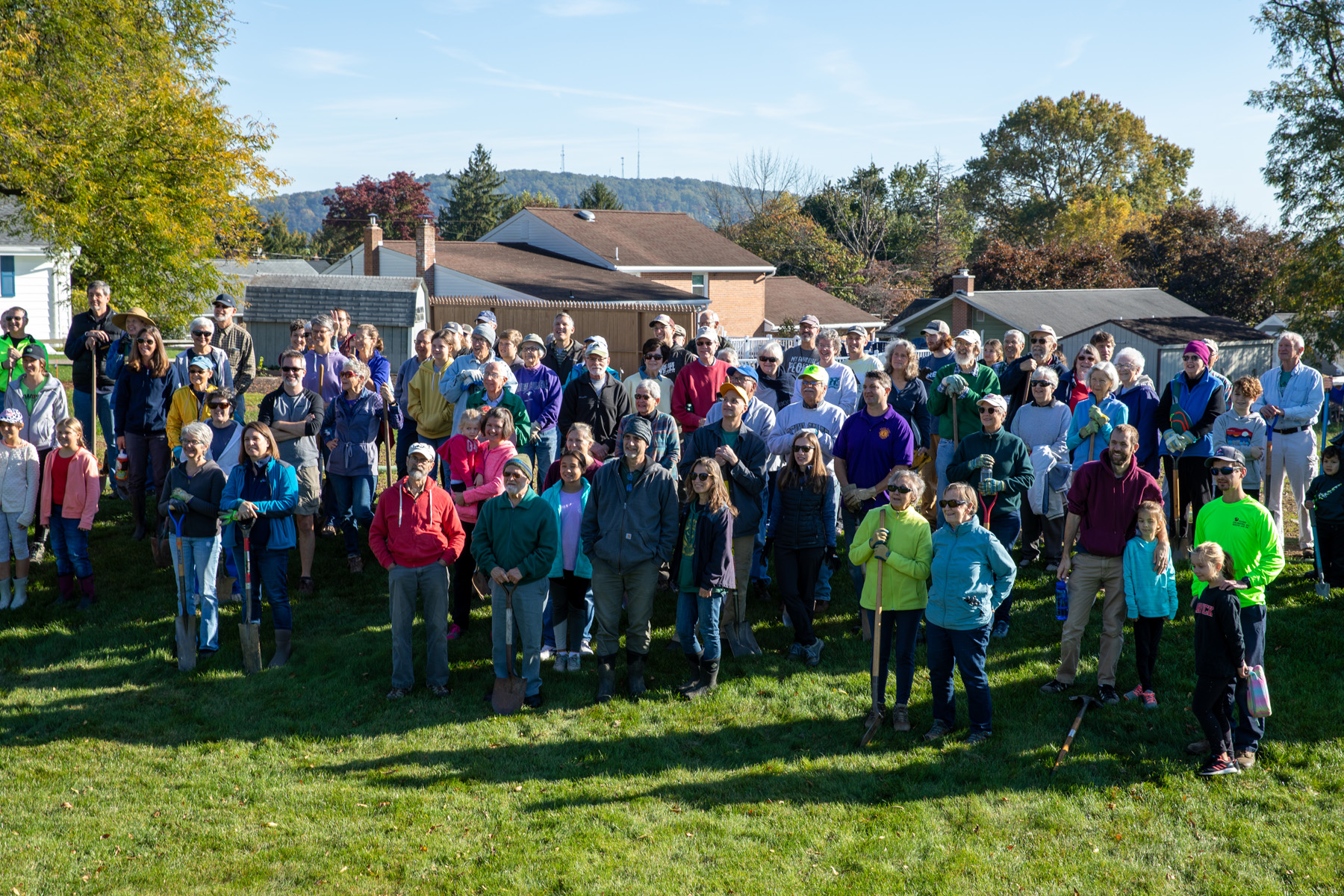
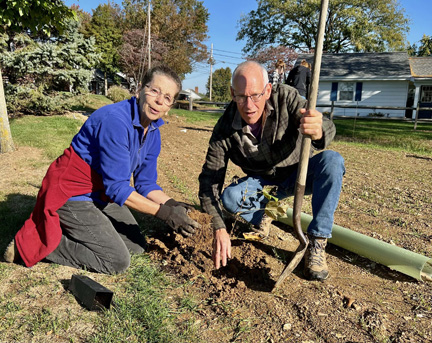
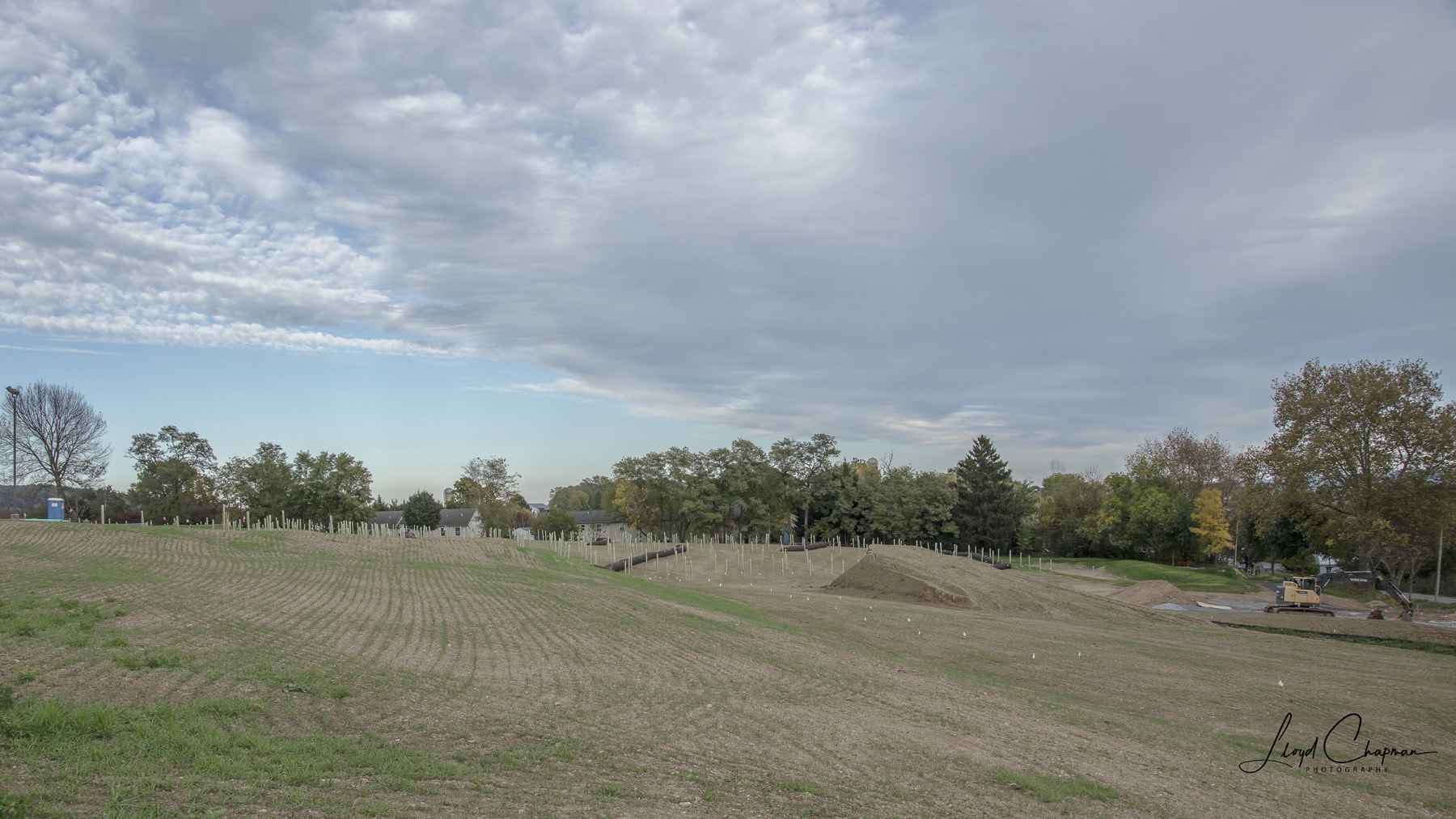
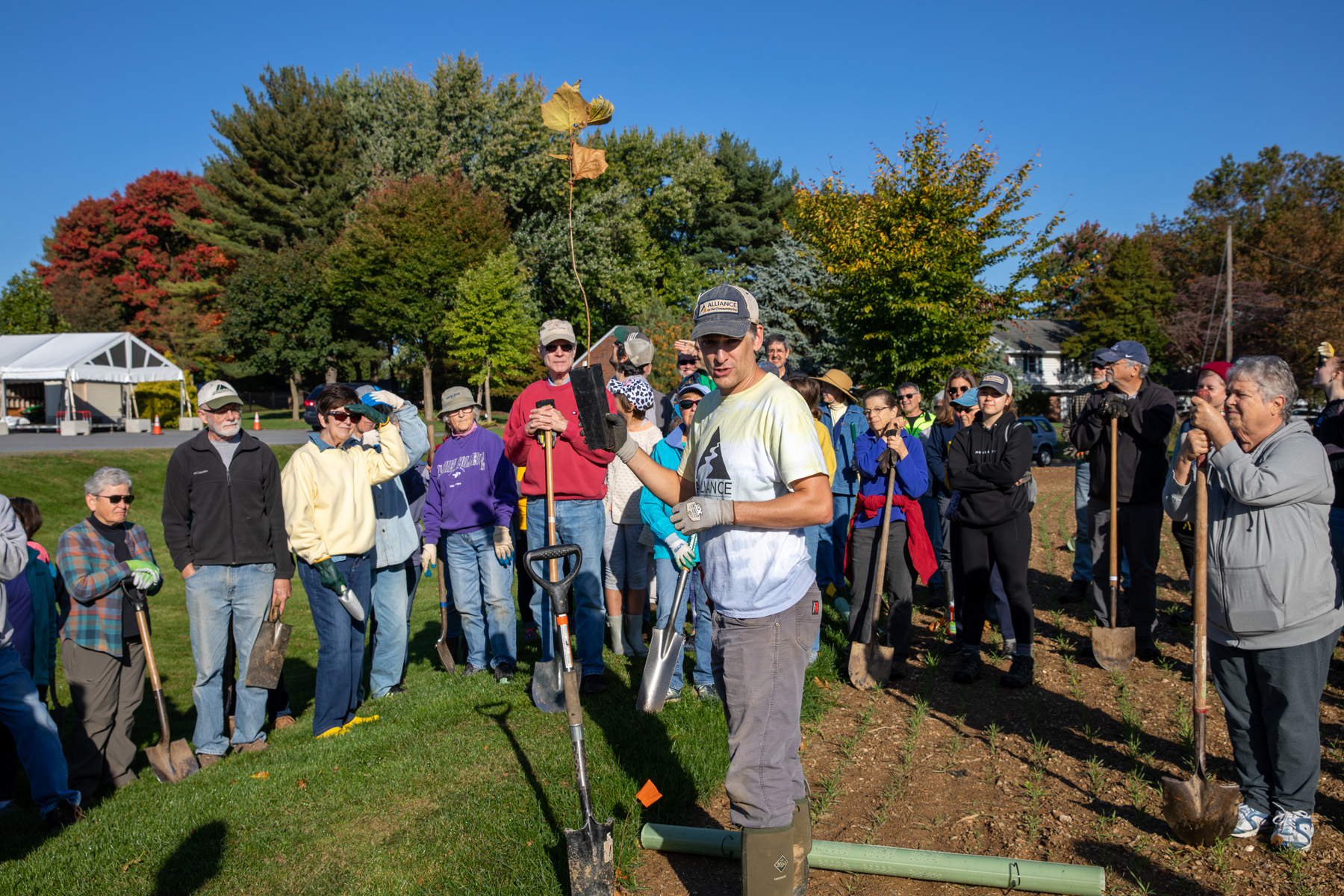
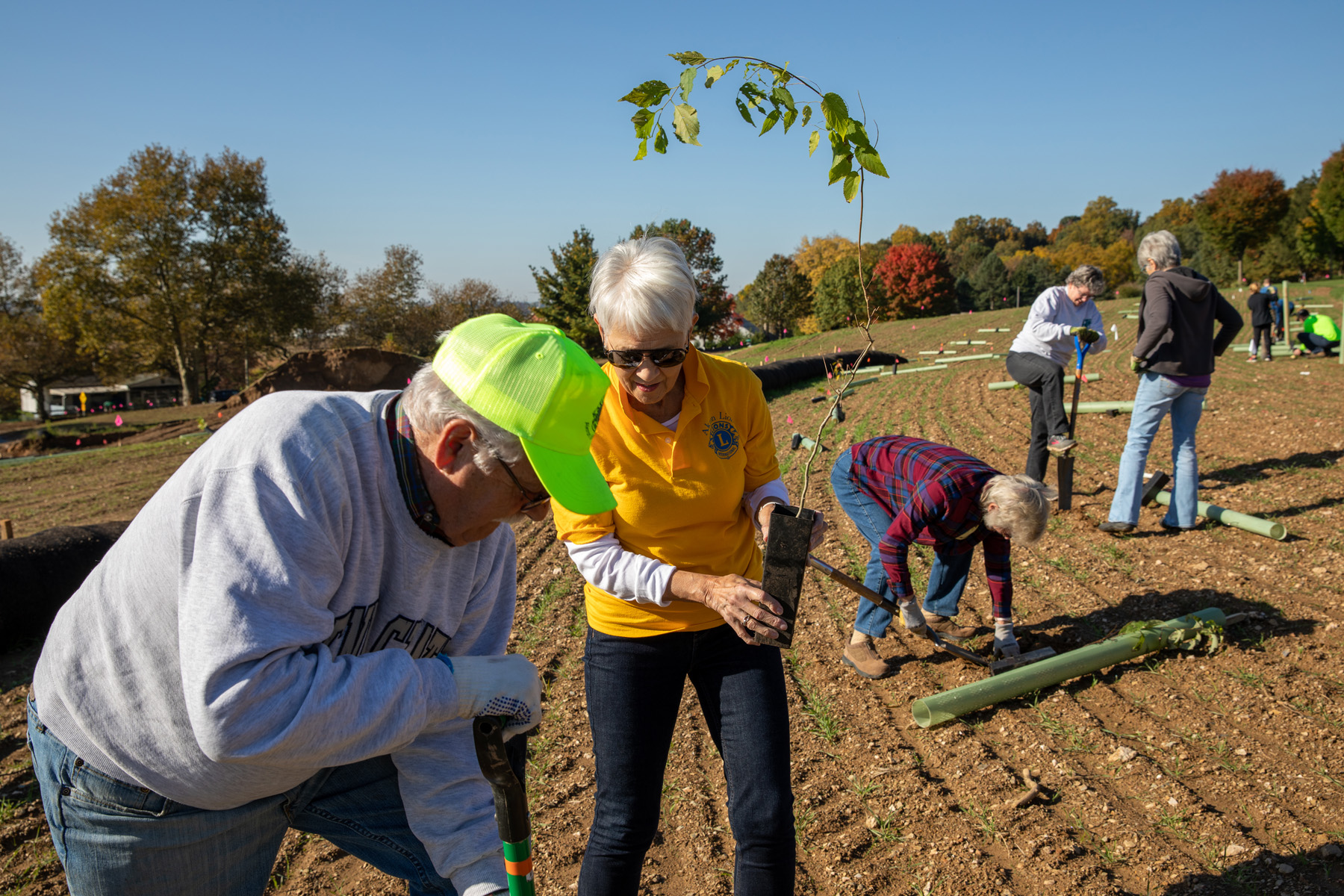
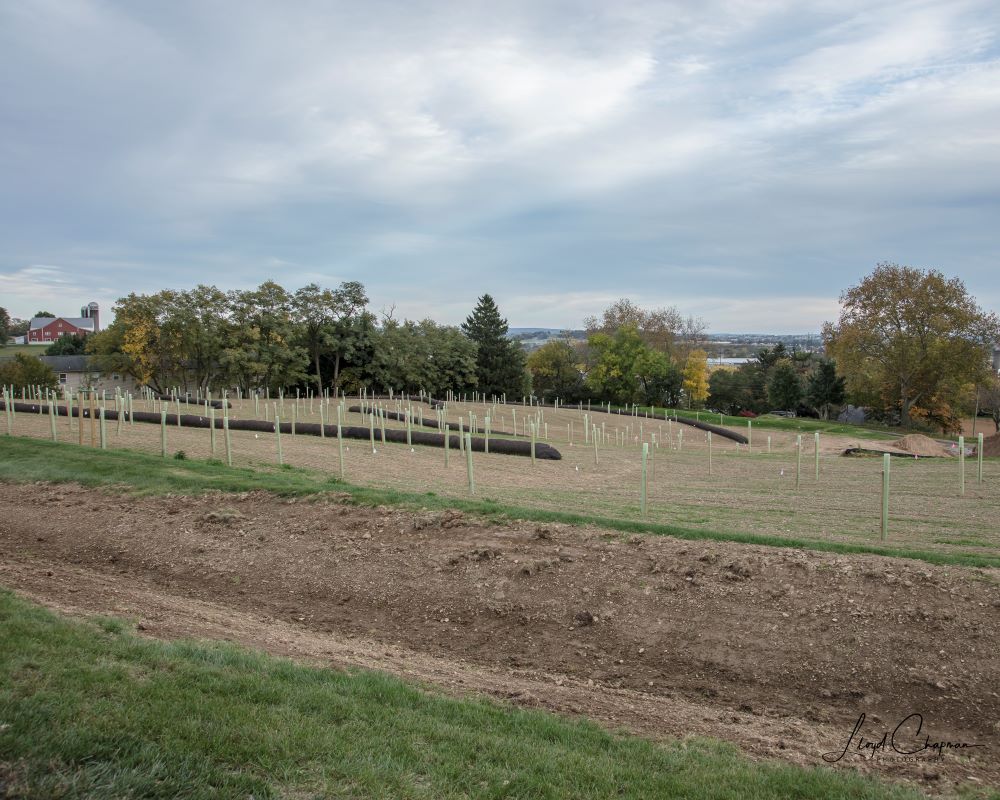
Installation of paths
During December 2022, the contractors installed woodchip pathways throughout the Nature Preserve, including spaces for the future installation of benches. The cemetery bank was also seeded with native grasses which, once grown, will not only provide habitat but also reduce the amount of mowing required.
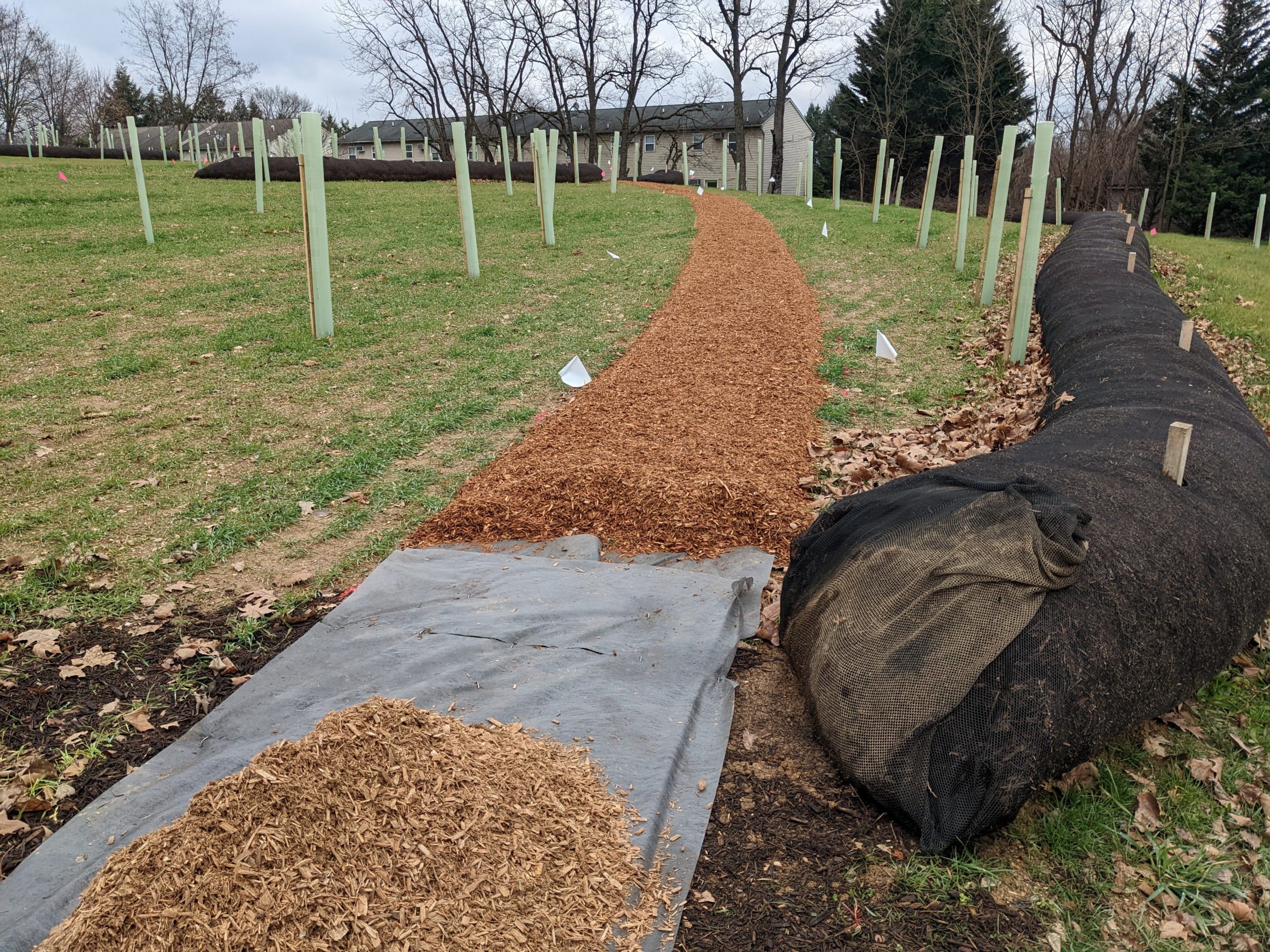
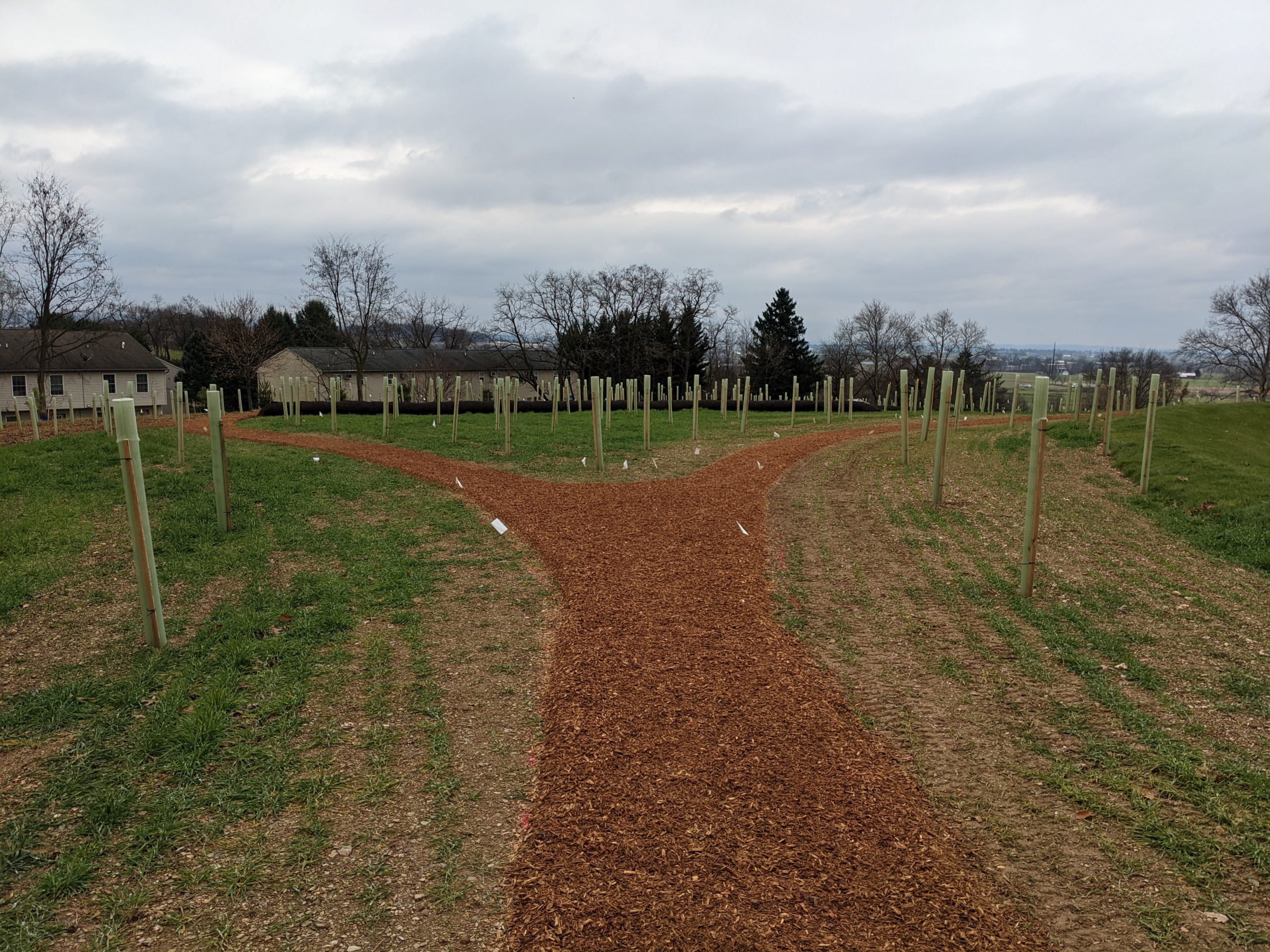
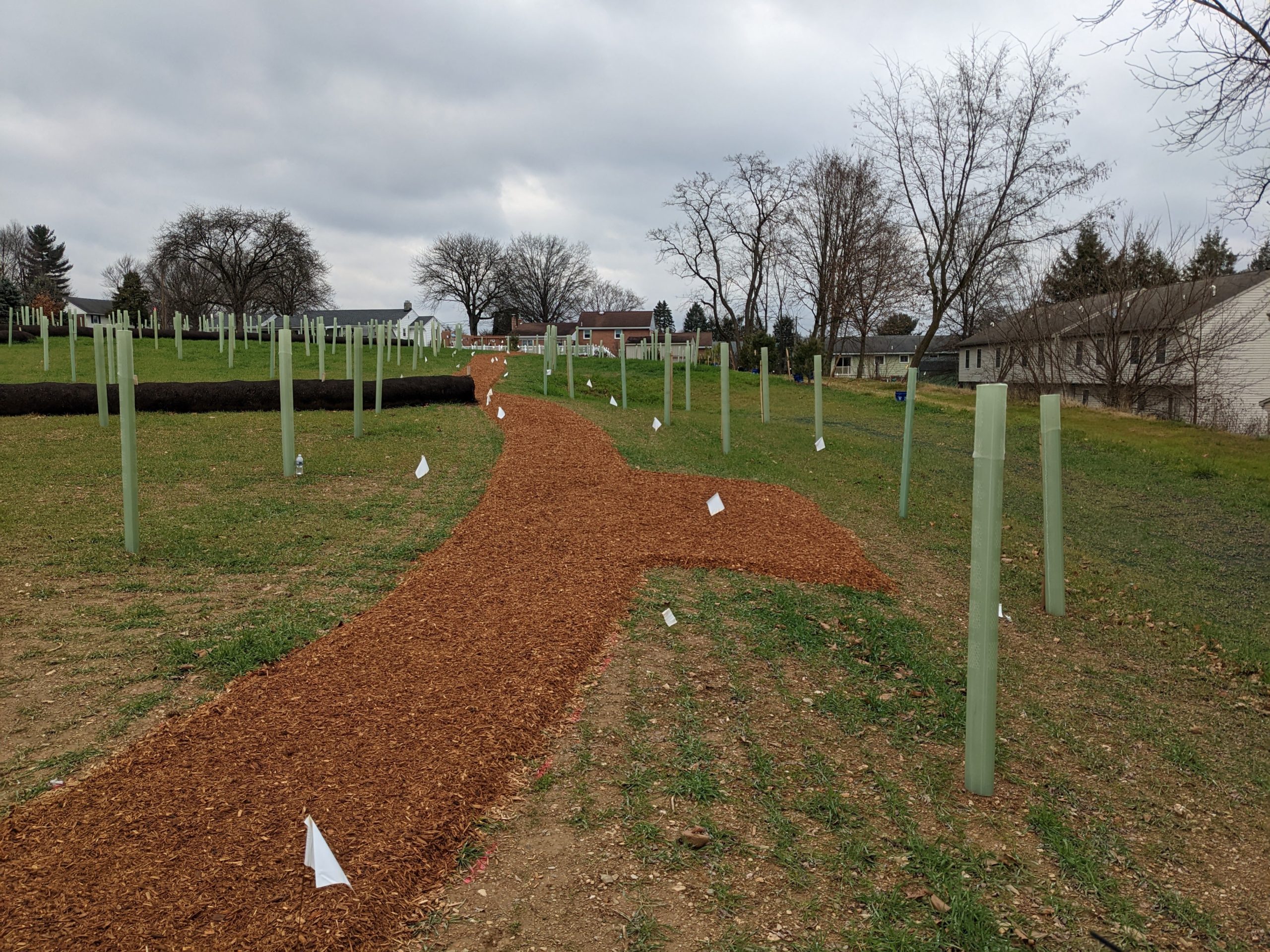
Growth and maturity
Growth, maintenance and maturity
This section is under construction, but will be used to record the growth of the native plantings, the maintenance of the site and the Nature Preserve as the plantings mature.
